Why we ran it: To find out if Ford’s all-purpose hatchback remains the driver’s car of choice in the family car class
Month 7 - Month 6 - Month 5 - Month 4 - Month 3 - Month 2 - Month 1 - Prices and Specs

Life with a Ford Focus: Month 7
Our road testers like it and so does the buying public, but the acid test has been living with it. So are we sorry to see it go? - 20th November 2019
In the time that this latest Ford Focus has been on our fleet, it’s notable just how common a sight it has become on the streets of Britain. Notable, but not surprising. The fourth-generation model has been on sale just over a year but it already feels like it’s been around far longer.
Which is, of course, exactly as it should be. For more than 20 years, the Focus has consistently hovered near the top of the UK’s best-selling cars list. Ford sold 49,517 in the UK in the first 10 months of 2019. Only two cars have sold more: the Ford Fiesta and the Volkswagen Golf, long the biggest class rival for the Focus.
The Golf and Focus are split by just 951 sales, which so late into the year reflects the intense competition between them – and it explains Ford’s development, erm, focus for the fourth-gen Focus. As our esteemed road testers will tell you, the Focus has long been the class leader for ride and handling but has struggled to compete with the Golf – and, increasingly, premium models such as the Mercedes-Benz A-Class – in terms of tech, interior comfort and perceived quality.
By running the Focus, we wanted to find out if it retained that winning mix of strong handling and immense practicality, but also if Ford had given it the extra polish to compete with rivals that feature a ‘posher’ badge.
On that first point, the Focus remains an absolute hit. Our ST-Line X model – with 180bhp 1.5-litre three-pot Ecoboost engine, six-speed manual ’box, 18in wheels and active dampers – remains a compelling drive. It’s comfortable on the motorway and dual carriageways but really comes into its own on a flowing country lane. Although it’s no hardened hot hatch (you’ll need a full-on Focus ST for that), it turns in and corners with aplomb and offers plentiful and rewarding feedback without ever feeling overly stiff or uncomfortable. Then, when you get to the supermarket, you have a practical, spacious car that will house considerable amounts of shopping.
As for practicality, our art editor, Sarah Ozgül, put the Focus through its paces in the process of moving house, using it to transport new and old furniture, DIY projects and a surprising number of big wooden doors, and – even though the odd bit of creativity was required when it came to loading – she found the it up to every challenge. For anyone in the market for a car of this size, it’s hard to think of a realistic load-hauling scenario in which the Focus wouldn’t be up to the job.
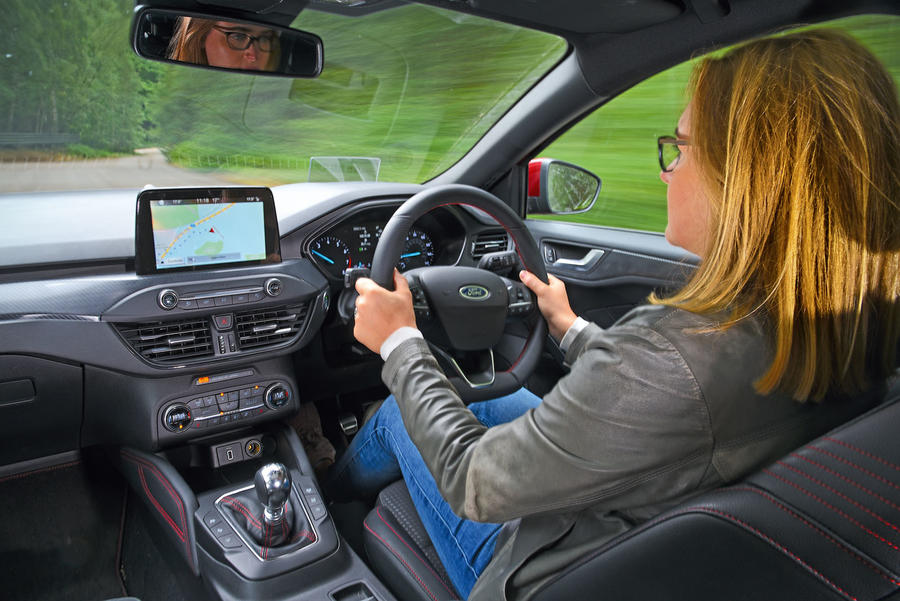
The Ecoboost engine won’t exactly set your heart aflutter for its aural qualities, but it’s ideally suited to its purpose here: it’s quiet and efficient, but with plentiful power almost always on hand when needed. It’s also smooth, which makes it ideal for covering long motorway mileage. Our car’s engine occasionally became a little rattly, though, particularly when the auto stop-start kicked in.
That said, fuel economy was a bit of a bugbear: it has an official economy of 51.4mpg, but despite our best efforts – including judicious use of the Eco drive mode – we found the average resolutely stuck at just under 40mpg. That’s not a total disgrace for a petrol-engined car (and the diesel Focus fares a lot better) but it’s still a little disappointing, especially against similarly priced hybrids.
On the whole, any niggles with the performance of our Focus were minor and largely offset by the pleasure we took in driving it. On to the second goal of our test, then: does this new Focus have the quality feel to compete against rivals long regarded as a bit, well, posher?
That’s a pertinent question – and not just because, with options, our specced-up ST-Line X model’s price added up to a hefty £33,145. Recently, Ford dropped the entry-level Style trim, so the cheapest Focus now on sale is the £20,605 Zetec. That’s Ford responding to sales trends: thanks to those PCP deals and the like, about half of Focus sales are of the higher-trim levels (X, Vignale, ST and so on).
The bad news: despite Ford’s best efforts and the extensive kit list, from the inside, our Focus still looks and feels much like a Focus. It certainly doesn’t have the wow factor of the new Mk8 Golf, which is all touchscreens and sliders, with barely a button to be found. But here’s the good news: I really don’t mind, because the Focus is comfortable, spacious and immensely practical.
There’s still an abundance of mildly unfashionable physical controls for things like the heating – but they’re well placed and intuitive to use. The seats aren’t finished in the poshest of materials – but they’re wonderfully comfortable and supportive.
The touchscreen sticks out of the dashboard, rather than being stylishly immersed in it – but it’s perfectly placed for visibility and easy access. Whether it’s the decent rear leg room, sizeable cupholders or adjustable head-up display, largely everything inside the Focus has seemingly been designed with function ahead of form. It’s not perfect – Ford’s Sync 3 infotainment system is a long way off the industry best (and largely saved by Apple CarPlay compatibility) – but it’s a car you can use on an everyday basis without feeling too precious about.
After several months of happy motoring, we can report this is one case where familiarity doesn’t breed contempt. It might not impress your badge-snob neighbours, but ignore them: the Focus continues to be hugely popular because it remains a compelling all-round package, being both superbly practical and engaging to drive. And, really, what more do you want from a Focus?
Second Opinion
I was pleased to find that the Focus has kept Ford’s chassis magic, with the ride and handling balance nailed down to a tee. I was equally disappointed to discover that its Ecoboost engine is still a bit thirsty. For me, the interior lacks the finish and feel-good factor I’d want in a £30,000 hatch, too.
Lawrence Allan

Love it:
Driving dynamics Well-weighted steering, strong cornering, fine handling: no car in the class drives better.
Practical magic Proper buttons and well-placed controls make the Focus immensely easy to operate.
Quiet cruising comfort Ecoboost three-pot turbo petrol engine is quiet and refined and it works well in all situations.
Loathe it:
Fuel economy Averaging around 40mpg might not be a deal breaker, but we’d hoped for more.
Infotainment system Sync 3 infotainment is occasionally clunky and can’t rival more intuitive systems from other firms.
Final mileage: 7010
Life with a Ford Focus: Month 6
Tech is useful when it works - 23rd October 2019
Auto stop/start function hasn’t been working as it should. I’ve only known it work properly three times. Recent roadworks near Autocar HQ caused chaos when exiting the multi-storey car park we use. It took an hour to get from level 10 to one, which was a good opportunity to really test it. Didn’t matter how many times I reset it: it just didn’t want to play ball.
Mileage: 6960

You can go your own way (but don’t) - 9th October 2019
The Focus comes with dual-zone climate controls that default to one setting for both passenger and driver. You press a button marked ‘dual’ to set individual temperatures, which is the opposite set-up to some rivals – but it’s a sensible one. The air-con unit works harder to maintain two temperatures, so by making synced controls the default, it’s a little more economical.
Mileage: 6915

Life with a Ford Focus: Month 5
Bigger than you expect inside - 25th September 2019
The back of the Focus is proving particularly Tardis-like for housing large loads, the biggest of which has so far been two thick oak doors. It did need some clever manoeuvring: one back seat folded flat, the front passenger seat reclined fully with the headrest removed. That still left room for my husband to sit in the back and help with the lifting.
Mileage: 6800

Cornwall beckons, but not before loading its boot with an oak door, a table, plants… - 18th September 2019
I’ve recently moved house, turning my commute from a three-mile cycle through west London suburbs into a 20-mile each way motorway trip into Surrey. That means my household can’t cope with just one little Ford Fiesta any more. I’m in the market for a second car and taking the keys of our Ford Focus gave me a chance to see how it would fit into my life – and I was able to put it to good use with all the new house shopping I’ve needed to do.
Part of the reason I wanted to try the Focus is because I’m attracted to the design: it’s such a leap forward from the previous generation. The sporty ST-Line styling of our car helps, making it look sleek, desirable and a bit premium. It made me proud to drive a Focus. You already see plenty of Mk4 cars on the roads, but it still doesn’t feel like a mass-market, run-of-the-mill workhorse that previous generations were.
Looking past the styling, my big interest in the Focus was its boot. We have moved from a tiny flat to a big house, so have had to buy lots of new furniture and decor. That means the Focus’s huge boot has been crammed with my nan’s old dining table, an oak door, a lawnmower, a filing cabinet, several tins of paint, a parasol and a few large plants (not all at once, I should add). It easily swallowed every load and the good shape of the boot meant it was easy to pack stuff in. That’s a big tick for a family hatch.
It hasn’t all been hard housemoving work. I was also able to use the Focus for a trip to visit my dad in Mullion, Cornwall – a seven-hour, 260-mile journey each way. I often get backaches driving on long trips, but the Focus just glided along on the motorway and I emerged in the south-west pain-free. The key to that was just how adjustable the driver’s seat was: after some work, I managed to get it just right. It’s a shame the passenger seat didn’t have the same range of adjustment.
The long-distance driving wasn’t all positive. We really noticed the droning road noise of the Focus at higher speeds and, although that has been tolerable on a short commute, it’s definitely more of an annoyance on a long trek.
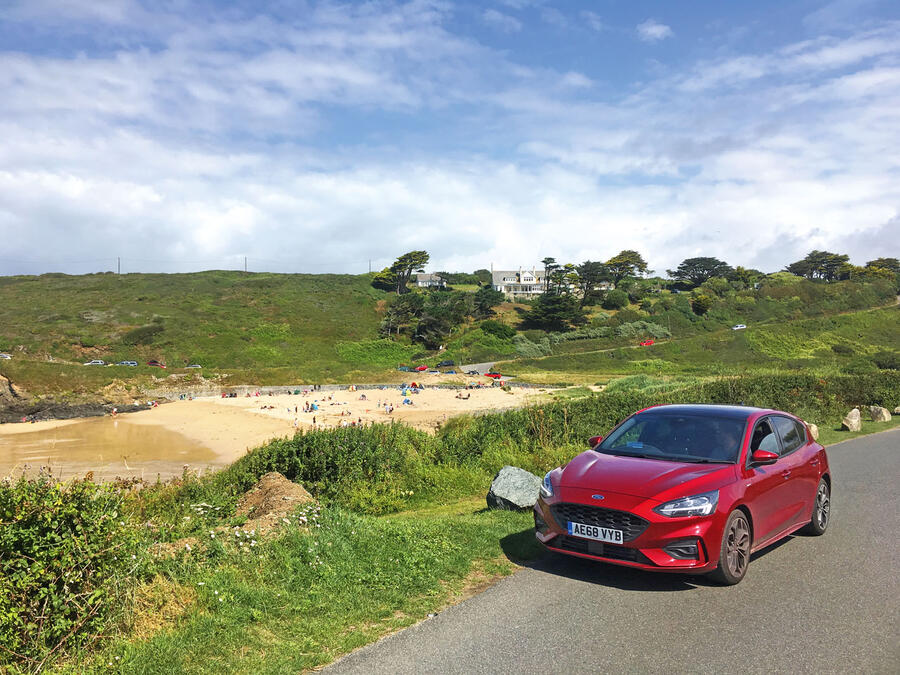
While in Cornwall, we visited a number of lovely places, such as Helston, Cadgwith and Coverack, and the Focus handled the tight Cornish lanes brilliantly, despite its notable width. The Park Pilot system and the useful graphic on the touchscreen were very reassuring getting through tight spots.
The biggest drawback of the Focus has been the fuel economy: it’s just not what I hoped it would be. The best I’ve managed over a long run is 38.5mpg, and that’s with the engine in Eco mode and driving as economically as possible. It means I’m getting only 372 miles out of the tank, so I’m refilling more than I’d like – and noticing the money it’s costing.
On the subject of Eco mode, another grumble: it’s annoying that the Focus doesn’t remember which drive setting I’ve selected. I’m having to reselect Eco every time I start the car.
But that’s a minor complaint, and aside from the fuel consumption, I’ve come to really like the Focus during my short taste of it. So would I buy one? Yes, although I’ve ended up ordering a Mercedes-Benz A-Class A180d on lease. Having tried it, I just preferred the Merc. The A180d had the fuel economy I needed – and a basic model (in a similar spec to the Focus) actually worked out cheaper on a lease deal.
Sarah Ozgul
Love it:
Park Pilot Especially love the warning beeps for passing traffic when reversing. It makes reversing out of a drive onto the main road a doddle.
Loathe it:
Safety warning bongs Collision warning has come on erroneously on several occasions, with an off-putting red graphic and loud alarm.
Mileage: 6334
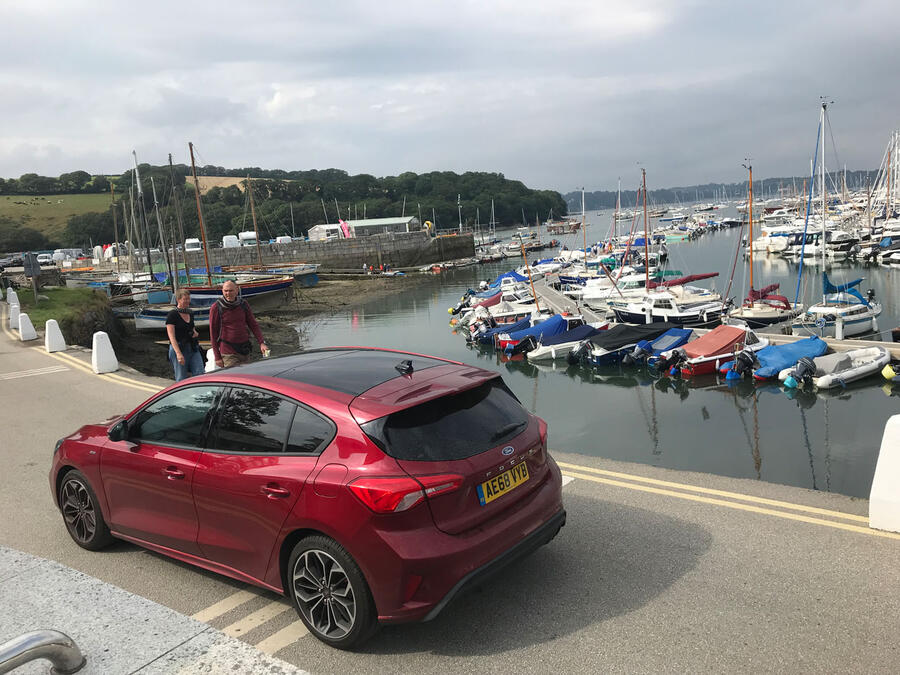
Life with a Ford Focus: Month 4
Double duty sunroof a costly extra - 28th August 2019
The big sunroof on our Focus proved useful on a recent photoshoot, with snapper Will able to stand up through it for some tracking shots. That said, we think the extra glass surface increases road noise above 50mph, and at £995 it’s a pricey option I could do without. Will also took some shots out of the boot – and with the ride set to Eco Comfort, there was no camera shake over potholes.
Mileage: 5724
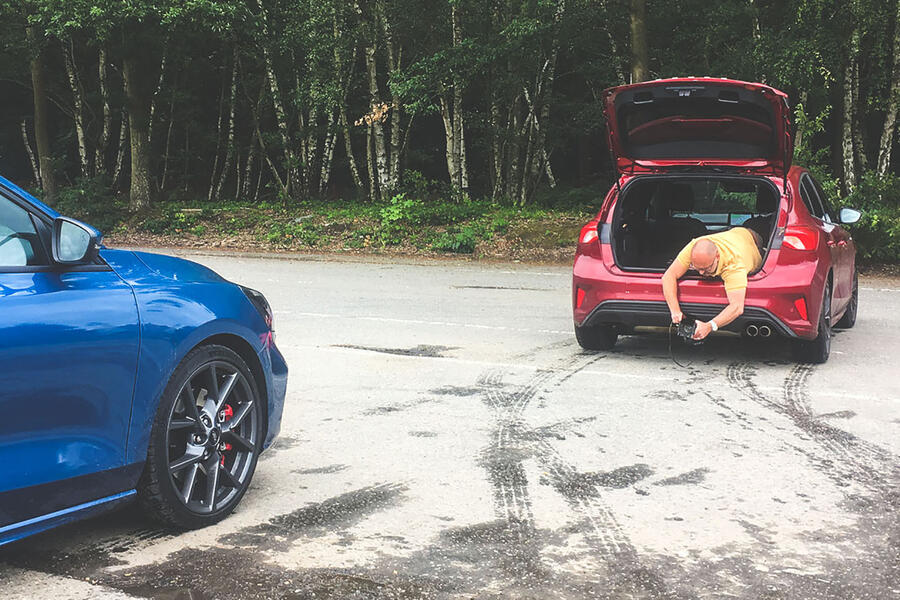
Proving practicality the right way - 7th August 2019
You can’t judge the true practicality of a family hatch until you’ve done an Ikea run in it – and having recently moved house, art editor Sarah was happy to oblige. Sarah made good use of the ample interior space the fourth-gen Focus offers, cramming in home furnishings with the same vigour she employs to stick car pics on an Autocar page.
Mileage: 4667
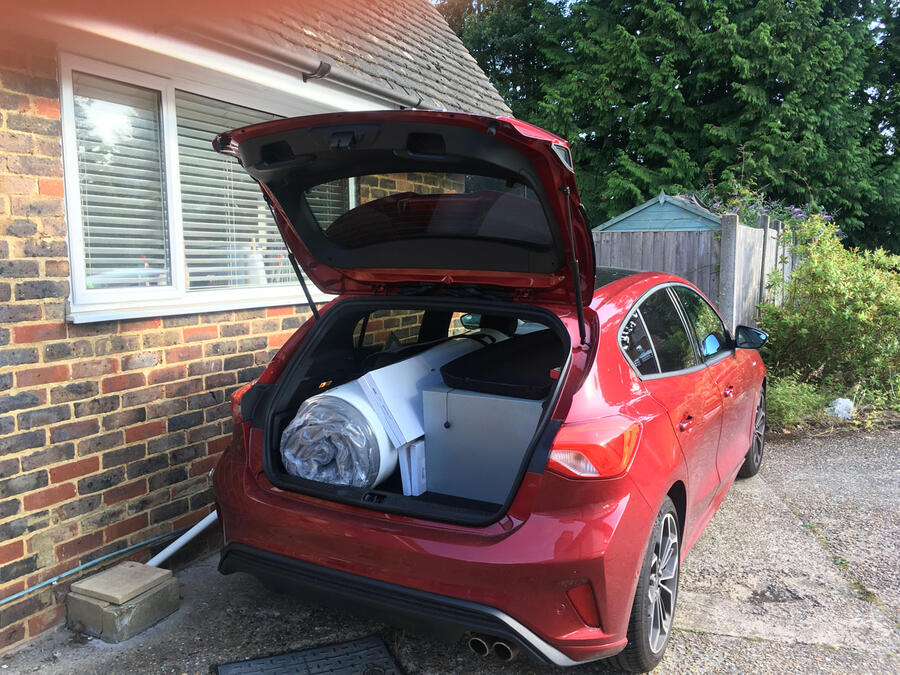
Life with a Ford Focus: Month 3
Does the with-options price of our family hatch nudge it into premium territory? - 26th June 2019
Recently, reader Mark Brierley wrote to us noting the often high cost of the options on many of the cars we test – including our Ford Focus. He said the price of our ST-Line X trim car with options – £31,145 – put it “well into ‘premium’ territory”, and suggested he’d rather put that money towards a Volkswagen Golf R.
As well as displaying impeccable taste in four-wheel-drive hot hatches, Mark raises a few interesting points. Given the entry-level price of a Focus is £25,650, the extras on our car tot up to £6000 or so. How many of them could we live without?
The first one is easy: the wireless charging pad (£100), because it doesn’t work with my iPhone. After that, the heated steering wheel (£150) is nice but non-essential, and while the panoramic roof adds a spacious feel, I can live without it to save £995. I’ll forego keyless entry (£250) and the £400 head-up display, not least because directions don’t appear on it when I use Google Maps through Apple CarPlay for navigation.

Our car’s Ruby red paint is the most expensive colour at £800, and I actually prefer a few of the cheaper metallic options. That said, I reckon the Focus still looks nice in the no-cost Race red standard colour, so we’ll take that to keep costs down (it’s worth noting that red is the only standard paint, with every other hue adding at least £250).
Right, which option boxes are we keeping ticked? The continuously controlled damping (£650) is definitely staying: I wouldn’t get rid of anything that might compromise our Focus’s excellent ride, poise and handling. The £400 blind-spot monitor, £500 Driver Assistance Pack (including very useful adaptive cruise control) and £500 Convenience Pack (including rearview camera and sensors) add up quickly but feel worth having for the extra safety and security.
A quick whirl on the Ford UK configurator shows I’ve cut the cost of the Focus down to £28,445. A useful saving, although, depending on your viewpoint, possibly still verging on premium territory.
What this exercise doesn’t recognise is that PCP deals have changed the way people buy cars. Ford says about half of UK Focus sales are of higher-level models – ST-Line, ST-Line X and Vignale trim (Ford didn’t have data on how many options were picked). In part, that’s because a higher list price can boost the residual values, which in turn results in lower monthly payments on higher-end trim models.

Besides, is the Focus that expensive in the current market? To compare, on the Volkswagen website I specced up a 1.5 Volkswagen Golf with equipment to match that of our £31,145 Focus as closely as possible, and I came up with a final price of £32,725. Would you opt for the better ride and handling of the Focus, or the greater interior sheen and polish of the Golf? It’s a tough call, and one probably settled on personal priorities and opinion.
Ultimately, what constitutes a premium car is subjective and, in that regard, the sheer ubiquity of the Focus counts against it. The fourth-generation model was only launched last year, but you already see a large number of them on the roads. And, let’s face it, Ford’s Blue Oval simply doesn’t have the prestige of car firms such as Mercedes-Benz or BMW.
But while there are sharper, shinier, more ‘premium’ machines in the family hatch class, the Focus, as our road testers found – and my experience backs up – might be better to drive than all of them. Well, the normal versions of all of them. I’ll accept that the Focus ST-Line X can’t match the Golf R for performance. That said, the Golf R now starts from £36,160, rising to £40,935 with kit to match our Focus.
I’ll leave it to Mark, and other buyers, to decide if they want to spend that extra for the big increase in performance. Although if they’re in the market for a performance hatch, they might want to wait until the Focus ST goes on sale, with an entry price of £29,495. Yup, it’s another option to consider…
Love it:
Steering Responsive and direct, helping make the Focus thoroughly rewarding to drive.
Loathe it:
Parking brake button Doesn’t have a light to tell you if you’ve applied it after stopping. Mild confusion ensues.

Mileage: 3975

Interior attention to detail - 19th June 2019
I’m a particular fan of the Focus’s cupholder set-up, which features one large open area and two ‘bars’ that can be slid back and forth to adjust the size of the holes. A simple, but ingenious solution: even my comically oversized Texan thermal mug fits in without complaint, but a quick adjustment ensures smaller drinks receptacles don’t rattle around.
Mileage: 3597

Follow the trail, if you really have to - 5th June 2019
An unusual feature I’ve found in the Focus: it can drop breadcrumbs. No, it’s not some sub-007-level gadget but a feature in Ford’s nav system that leaves blue dots on the screen showing where you’ve come from should, presumably, you need to retrace your steps. Interesting, but I’ve yet to find many situations in which it has been useful.
Mileage: 2314
Life with a Ford Focus: Month 2
Fourth-gen Focus has started revealing its Tardis-like qualities - 22nd May 2019
The housing development I live on was built in the mid-1960s, something you can tell by the design of the houses – and the size of the on-street parking bays. I’ve been acutely aware of the latter every time I’ve gone to reverse park our Ford Focus.
The row of parking bays closest to my house has five spaces, designed to easily accommodate the average family car. Except in the 1960s, Ford’s family car wasn’t a Focus, or even an Escort: it was a Ford Anglia.
There are also a lot more cars on the road than there were in the ’60s, something you can tell from the amount of vehicles parallel parked on the other side of my tight cul-de-sac, often greatly reducing manoeuvring space when I’m trying to reverse a Focus into a space designed to house an Anglia.
That the new Focus is bigger than an Anglia won’t be a surprise. Cars tend to get bigger from generation to generation, a trend that applies far beyond Ford. So I was expecting this fourth-generation Focus to be bigger than its predecessor. But what really surprised is how much more cavernous than the third-gen version it feels when you’re sat inside it – something noticed by several Autocar team members.
Which is odd because, in overall terms, the car’s not really that much bigger. Ford lists the new Focus as being 4378mm long, only 20mm up on the old model. And yet inside it feels like a lot more, probably because the wheelbase has been substantially stretched, by 53mm to 2701mm, which has been used to add plenty of interior space.

Ford has used that space well: there’s plenty of leg room in the back, and enough storage cubbies and compartments that it can take some time to find things I’ve hidden away. The addition of the panoramic roof (a £995 option) serves to make the Focus feel even more expansive.
Thing is, all that extra interior space can play tricks with your mind, making you think the Focus is bigger than it really is. And that makes the task of reversing into a 1960s parking bay feel even more challenging than it actually is. There are some cars I haven’t even bothered trying to fit in the parking bays, instead opting to park a little further from my front door where there are bigger spaces. But the Focus isn’t in fact that big – it just feels like it is.
While rear visibility is decent out of the Focus, with limited room to manoeuvre the rear parking camera and sensors fitted have proven useful – not so much to guide me into spaces, but to help prove to my brain that the Focus’s dimensions aren’t quite what they seem.
And with my brain in gear, I’ve been able to enjoy the substantial interior space the new Focus offers. And when my focus is on looking forward, such as when I’ve found myself on a nicely flowing country road, worries that the car is excessively wide are soon forgotten. For when it comes to handling, the Focus still achieves that rare feat: feeling as poised, direct and responsive as smaller cars.
Love it:
Cruising calm Sure, it’s not as peaceful as an electric car, but the quiet 1.5-litre three-pot makes for blissfully soothing cruising.
Loathe it:
noisy warnings Collision detection is a very useful feature, but occasionally the Focus one goes off for no real reason – AND IT’S VERY LOUD!
Mileage: 3011
Function over form for the infotainment - 8th may 2019
Seems odd in this age that the infotainment screen sticks up from the top, as if worked in as an afterthought. I’ve always thought they look smarter set into the dash, such as in the Volkswagen Golf. But using the Focus on a regular basis, I’m sold: it means the screen is perfectly in my eye-line, and easier to reach. A win for function over form, I reckon.
Mileage: 2714

Life with a Ford Focus: Month 1
Door protection comes at a cost - 24th April 2019
Our Focus has been earning praise from colleagues – although several have reported an odd rattle when opening or closing the doors. We tracked it down to the pop-out door edge protectors, part of the £550 Convenience Pack. A shame that a (very useful) feature designed to keep your doors’ premium sheen sounds a little, well, cheap.
Mileage: 2413
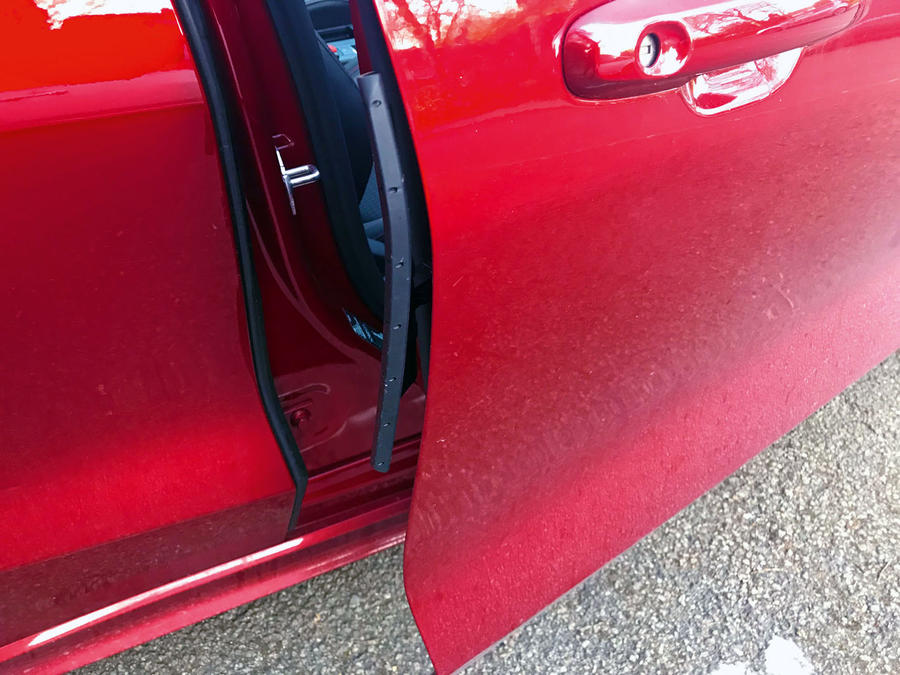
Welcoming the Focus to the fleet - 17th April 2018
Since it was first launched 20 years ago, the Ford Focus has been entrenched as a core part of British motoring. On any motorway, the Focus is as ubiquitous a sight as road signs and traffic cones.
That’s because, throughout three generations, the Focus has always been a true all-rounder: an affordable, refined and thoroughly decent machine that can work as family transport, company car, motorway cruiser and even, in certain forms, hot hatch.
That versatility is why the car’s name has always seemed something of a misnomer. In an era when models are increasingly laser-targeted to ever-narrowing market niches, the Ford Focus never had such a singular, well, focus. It’s a laudable and proudly mainstream car, with the widest possible target audience – although the Ford Lack of Focus doesn’t sound so good.
That broad approach applies with the new fourth-generation Focus, launched late last year. And, in a bid to reach a huge number of market segments, the Focus is available in a head-scratchingly wide array of variants. There’s the ‘standard’ hatch, an estate, the upmarket Vignale edition and the SUV-inspired high-riding Active version, all of which are available in a number of trims with different bodywork style. Oh, and there’s a hot ST model on the way, which is likely to be followed eventually by a hotter RS.
Add in multiple different suspension and engine options (even before a mild hybrid arrives next year), and a Focus buyer has plenty of decisions to make. And that’s before you start ticking boxes for the myriad option packs and extras.
That incredible breadth is reflected in differing abilities across varying specs. So when it came to putting the Focus through Autocar’s exacting road test, our testers spent considerable time ensuring they secured the spec most likely to appeal to Autocar readers, the most dynamically capable version on offer.
They settled on the ST-Line X trim, running on 18in alloy wheels, powered by the 180bhp 1.5-litre three-pot Ecoboost engine through a six-speed manual ’box, riding on optional ‘continuously controlled’ adaptive dampers. Sounds good, right? Our testers thought so, awarding it a class-leading 4.5 stars.
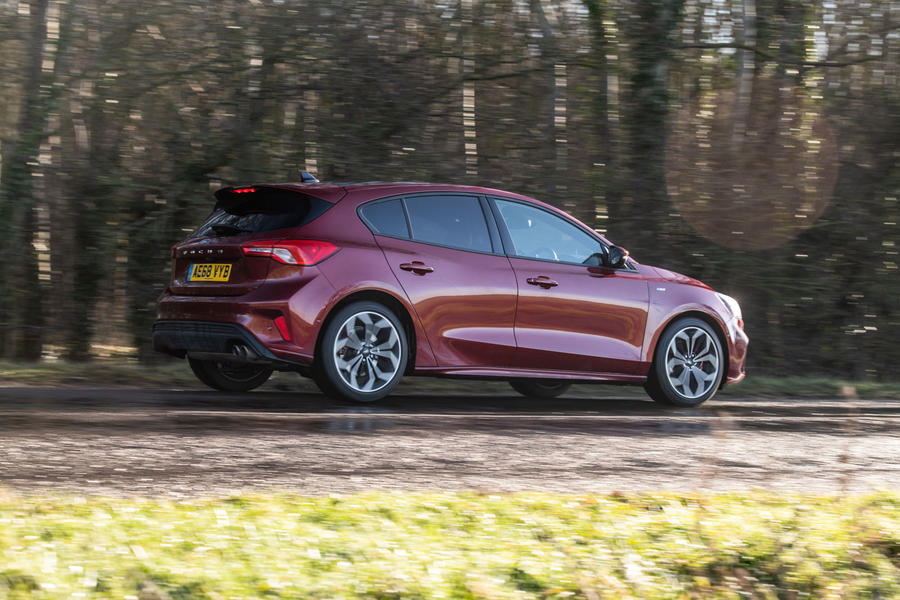
So when considering a car to add to our long-term fleet, rather than battle through the configurator and spec sheets, we took the easy option. We asked for a car just like the one our road testers specced. Ford took that a step further: for the next few months or so, I’ll be driving around in AE68 VYB, the exact car we road tested.
It’s worth noting that quite a few option boxes were ticked in the process of speccing that car. Among the extras added on are a panoramic sunroof, LED headlights, heated steering wheel, head-up display, wireless charging pad and plenty of supplementary safety kit. All additions that will doubtless make my life more comfortable in the coming months, but they do raise the price of our car from £25,650 to £31,145.
That’s stretching it a bit for a mass-market family car, so I’ll be pondering hard which of those extras, if any, are actually worth the cash.
It’s those sorts of questions we’ll be out to answer. We know the Focus is good to drive – great, even – but will it still shine with the familiarity that comes after thousands of miles? The early signs are positive. While it’s an all-new design on an all-new platform, the fourth-generation model still has that familiar Focus styling – but it’s definitely sharper and fresher, especially in ST-Line trim. I’ve noticed it drawing the odd admiring glance, which isn’t something you’d expect from a Focus.
The interior doesn’t quite live up to the bodywork. There’s nothing really wrong with it, but it doesn’t feel special, even taking into account the faux carbonfibre and other ST-Line flourishes. It feels like the mass-market car it is, lacking the sheen of, say, a Volkswagen Golf.
That said, some of that relative lack of visual appeal is because the Focus retains a good number of physical buttons and switches, and I’m happy to forsake a bit of sheen for the ease of use and functionality they’ve offered so far – especially since Ford’s Sync infotainment isn’t particularly special.

While the Focus may look familiar, one major difference is how big it feels inside. The switch to Ford’s new C2 platform has allowed the wheelbase to be extended by 52mm, which Ford claims allows for an extra 40mm of rear leg room. I’ve mostly been sitting up front, so haven’t put that fully to the test yet, but expect us to start cramming family, friends, flatpacks and other assorted oddments inside soon.
We’ll be loading up the Focus for journeys long and short, and on all types of road. Basically, we’re intending to treat our Focus the way thousands of owners have theirs over the past 20 years – which is to be used for pretty much everything.
Second Opinion
Knew I’d love the Focus and I did. That 1.5-litre Ecoboost powertrain is so far ahead of where affordable cars used to be, it’s ridiculous – smooth, strong, willing. And the gearbox stirs my interest in pure manuals again. Only drawback is this Focus feels unnecessarily big. Time to slim?
Steve Cropley
Ford Focus ST-Line X prices and specification
Prices: List price new £25,650 List price now £25,895 Price as tested £33,145 Dealer value now £19,369 Private value now £17,217 Trade value now £17,030 (part exchange)
Options:Ruby red colour £800, blindspot monitor £400, head-up display £400, keyless entry £250, wireless charging pad £100, LED headlights £750, heated steering wheel £150, continuously controlled damping £650, convenience pack (rear-view camera, active park assist) £500, driver assistance pack (traffic sign recognition, auto high beam, adaptive cruise control) £500, panoramic roof £995
Fuel consumption and range: Claimed economy 44.1mpg Fuel tank 52 litres Test average 38.5mpg Test best 39.5mpg Test worst 38.0mpg Real-world range 440 miles
Tech highlights: 0-62mph 8.3sec Top speed 138mph Engine 3-cyls, 1497cc, turbocharged petrol Max power 180bhp at 6000pm Max torque 177lb ft at 1600rpm Transmission 6-spd manual Boot capacity 375 litres Wheels 18in, alloy Tyres 235/40 R18 Kerb weight 1417kg
Service and running costs: Contract hire rate £218 CO2 126g/km Service costs none Other costs none Fuel costs £655.86 Running costs inc fuel £655.86 Cost per mile 14 pence Depreciation £8620 Cost per mile inc dep’n £1.34 Faults none


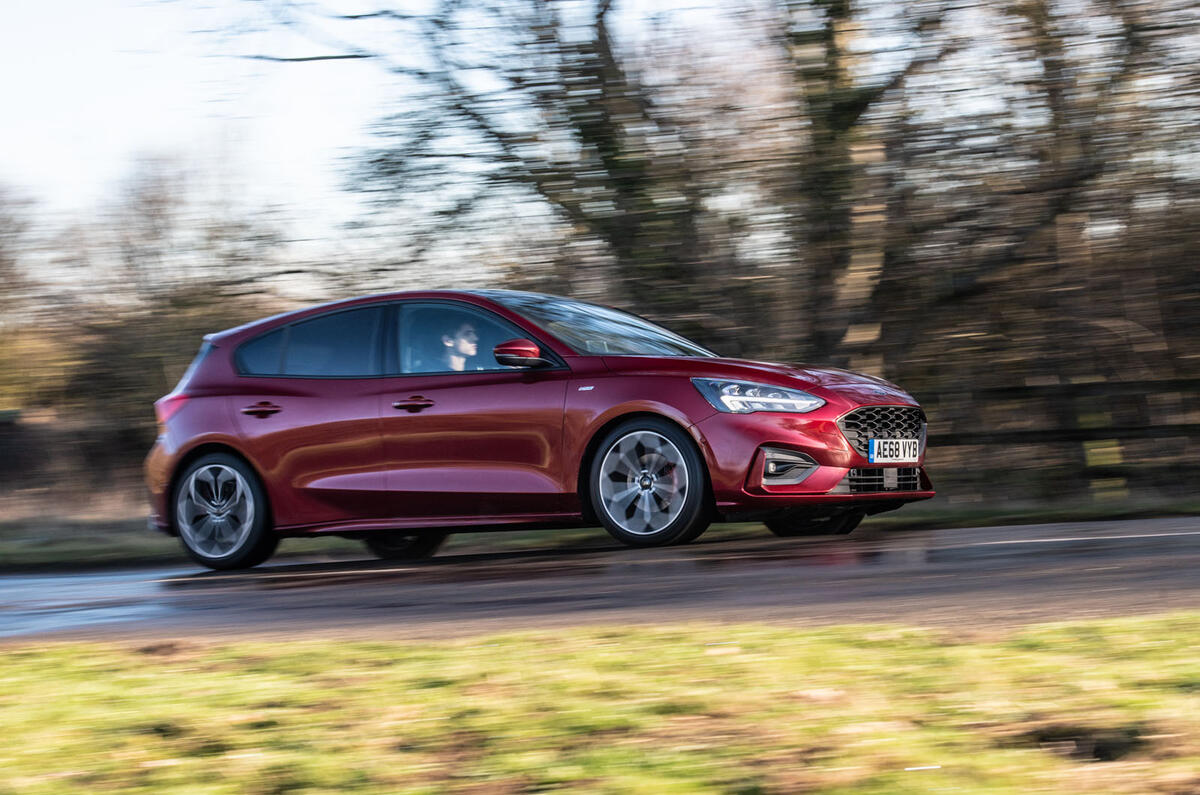

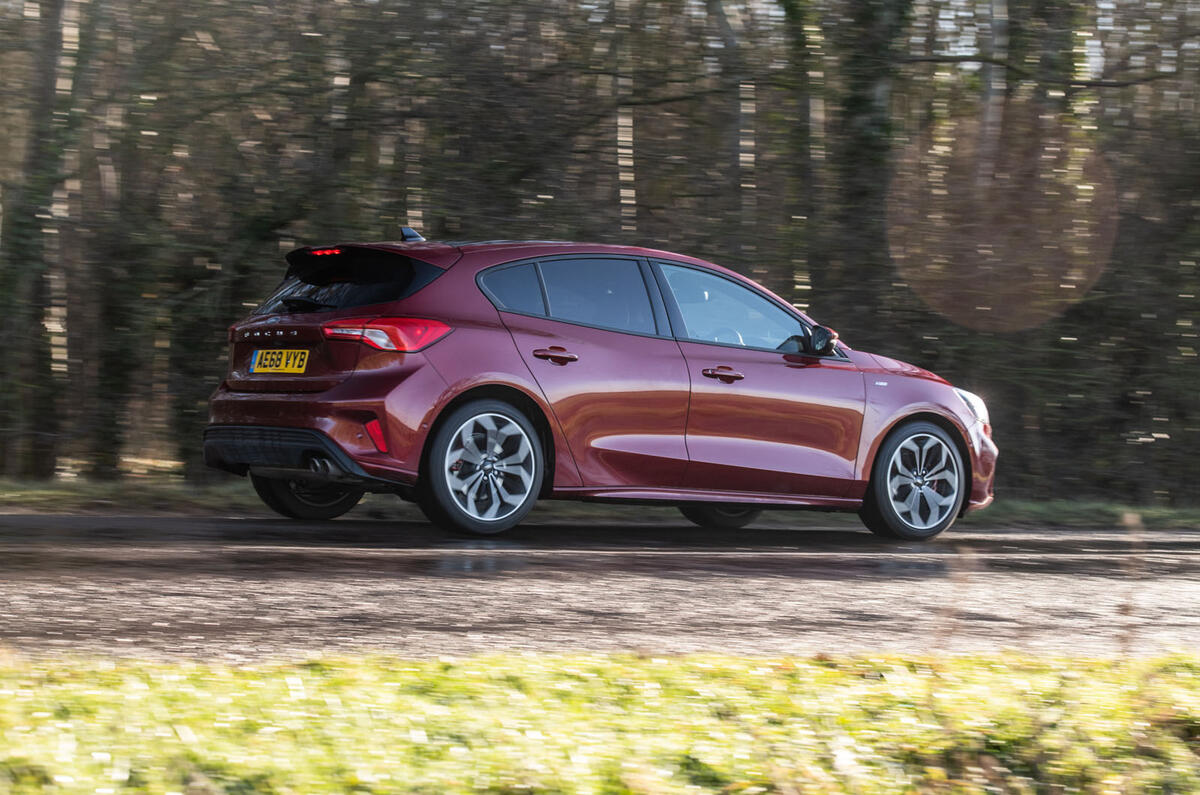
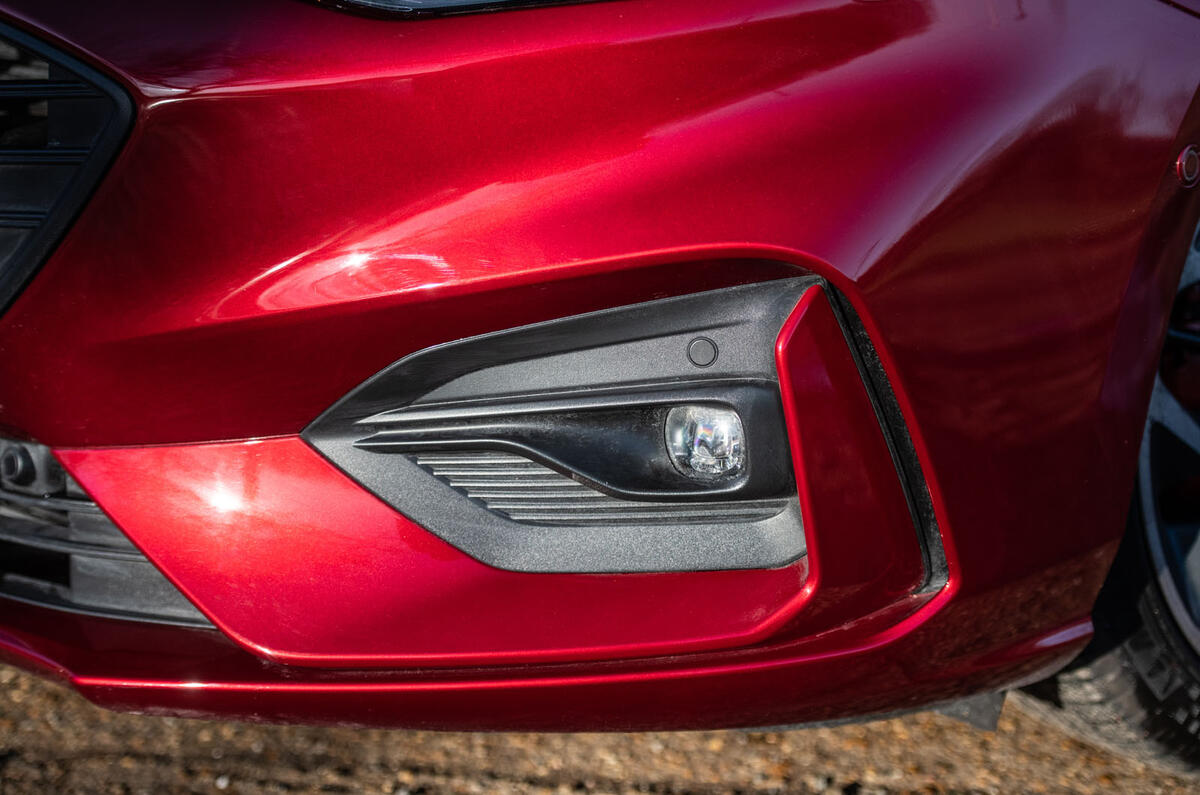

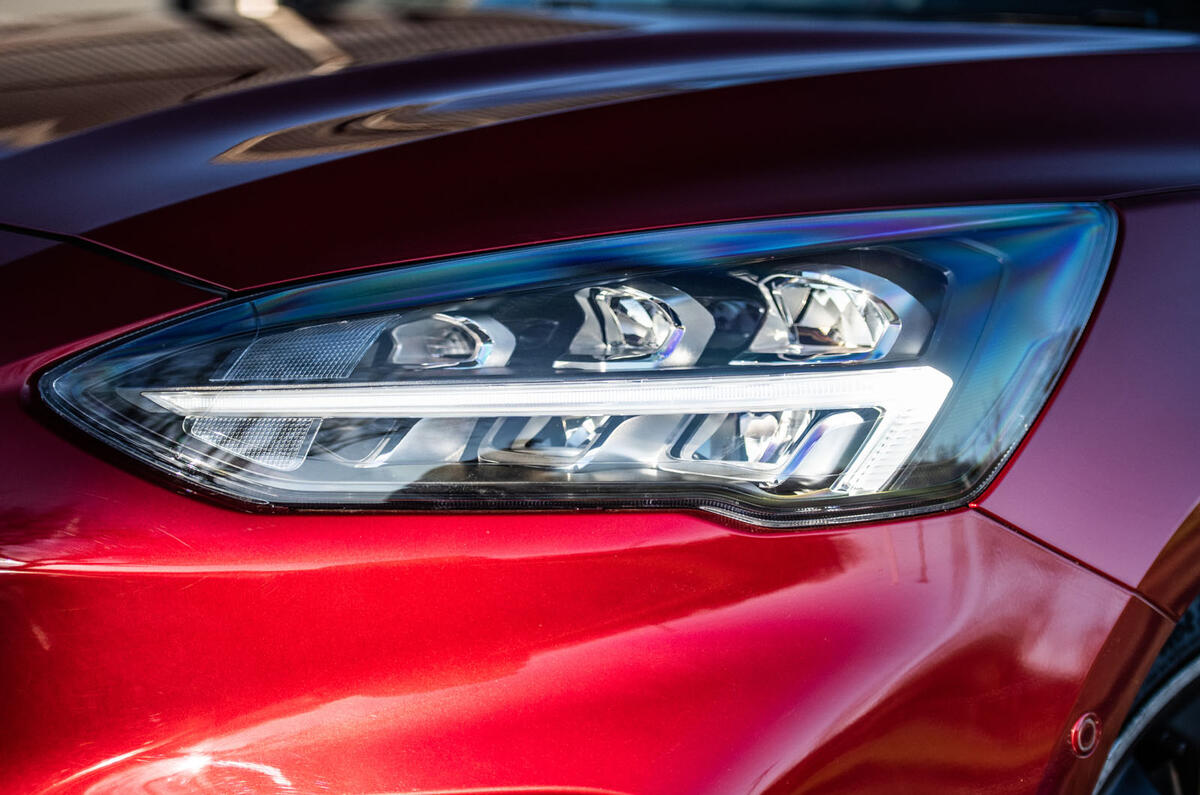
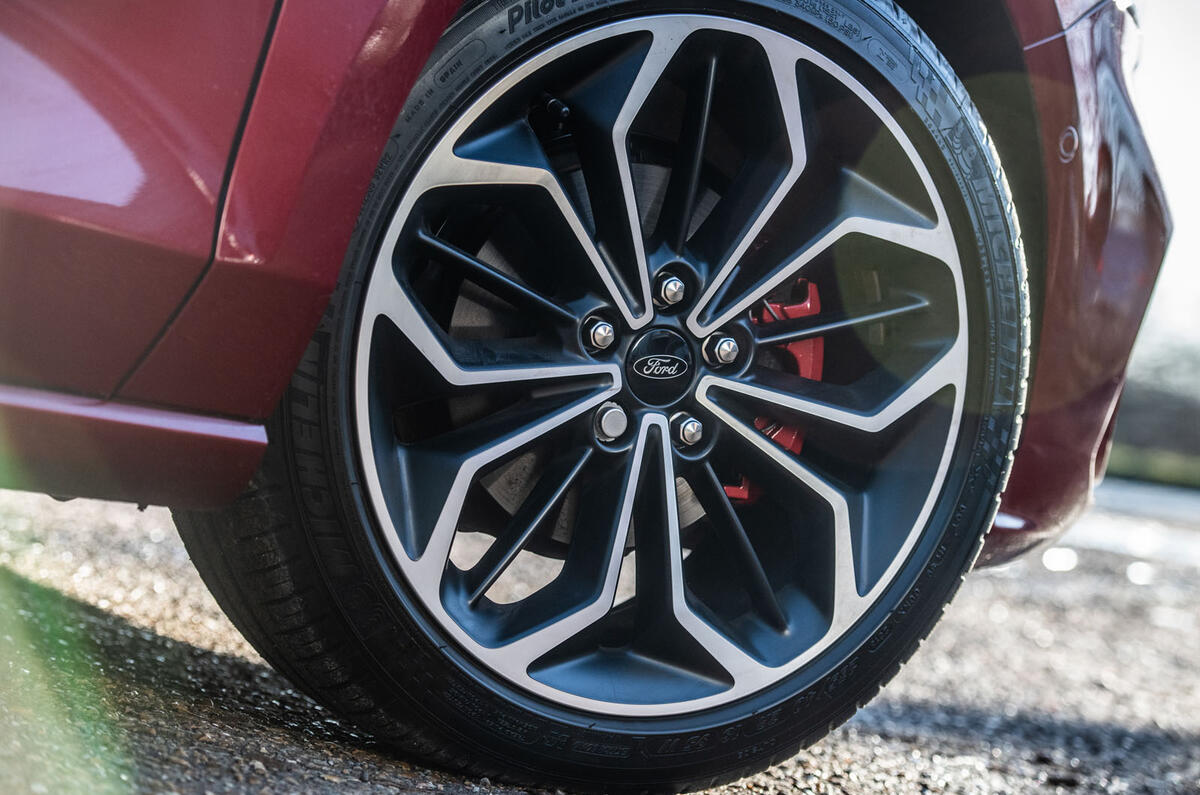
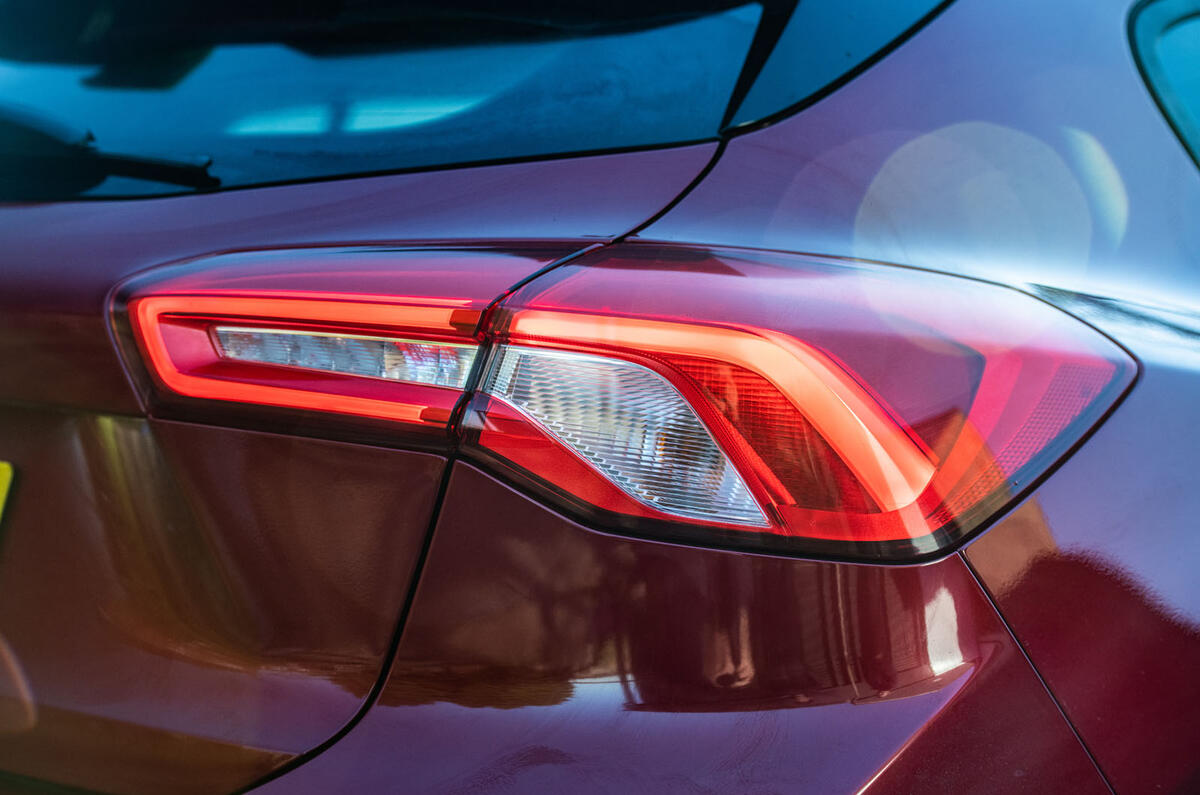
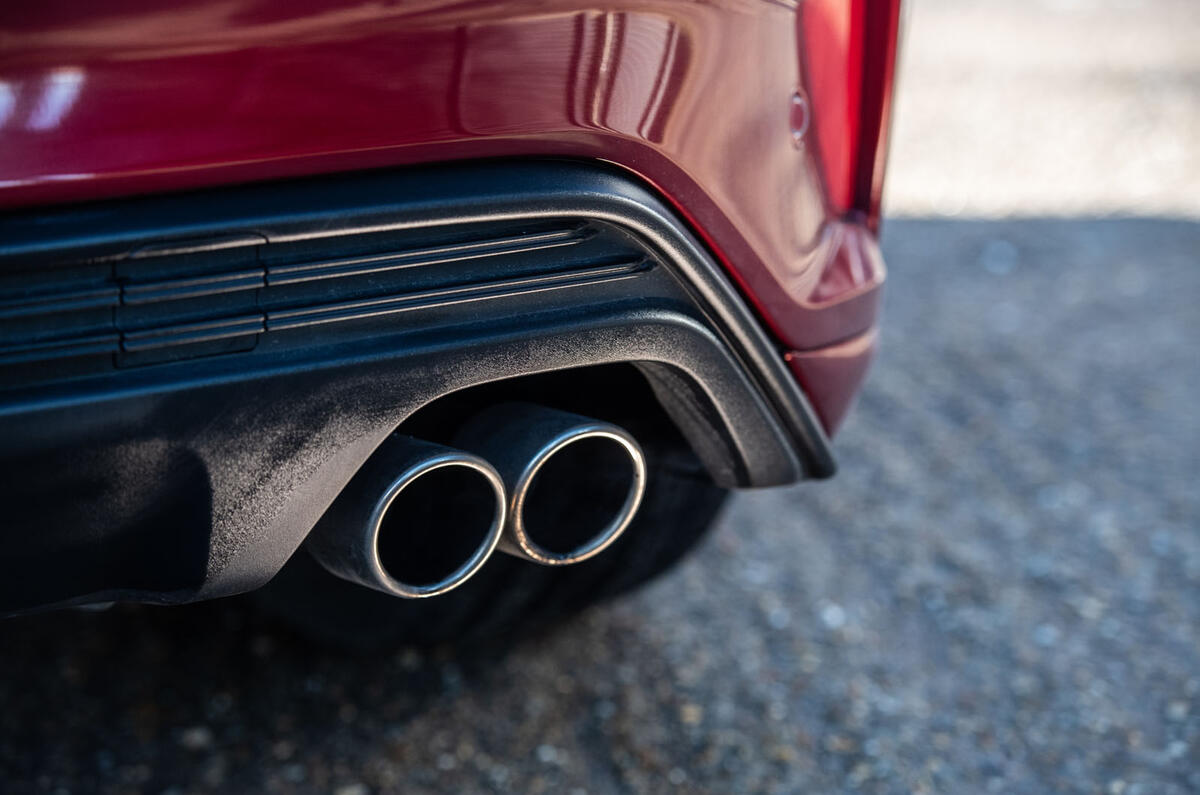
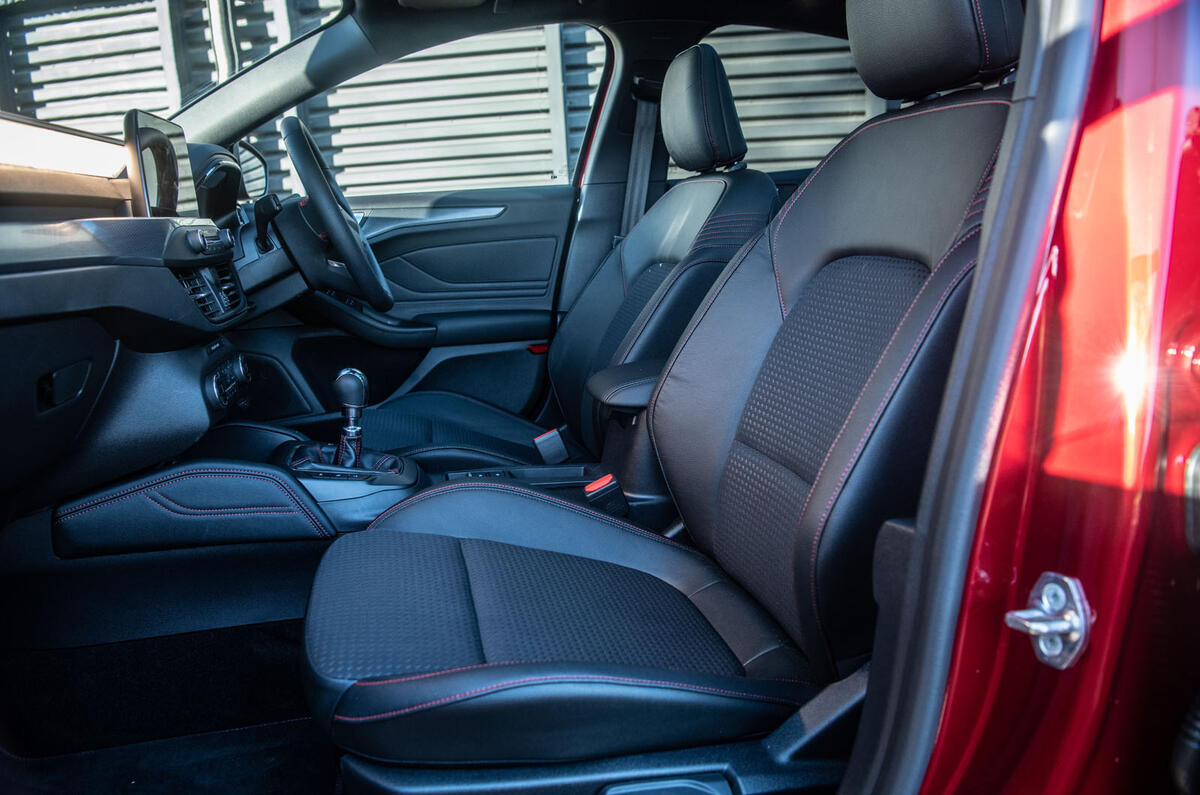

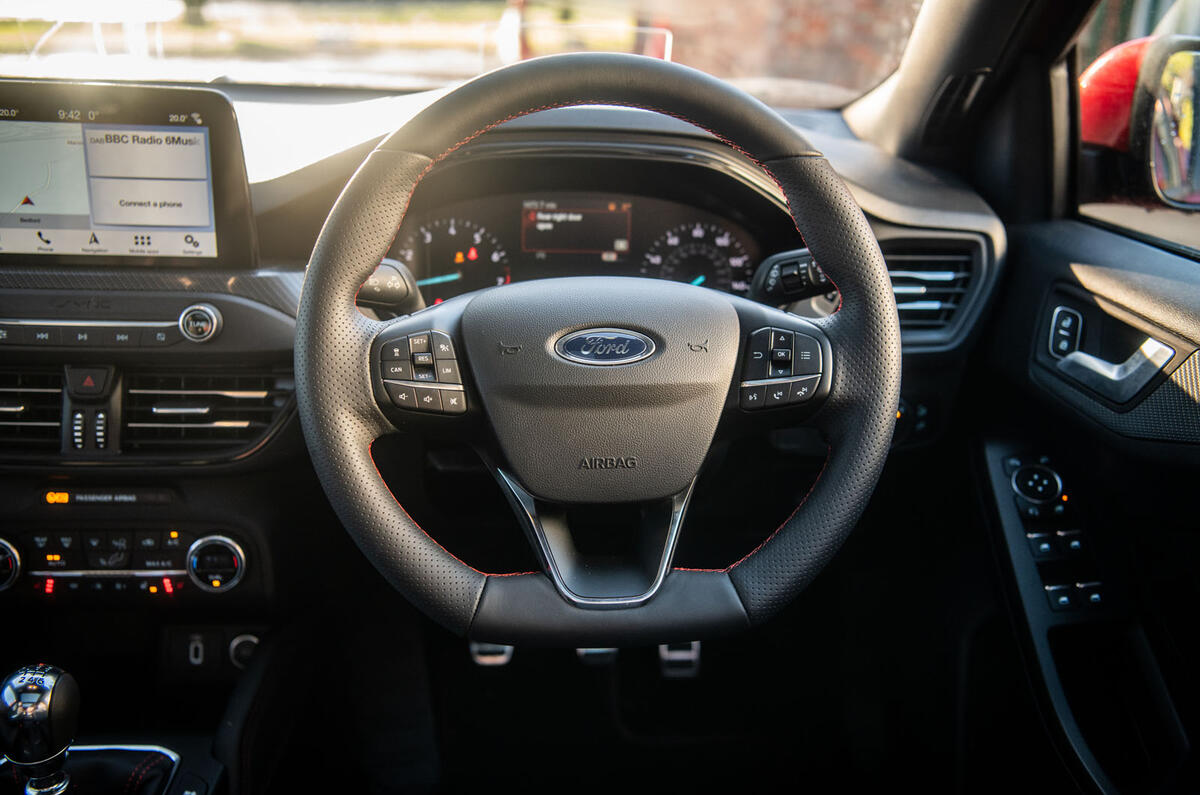
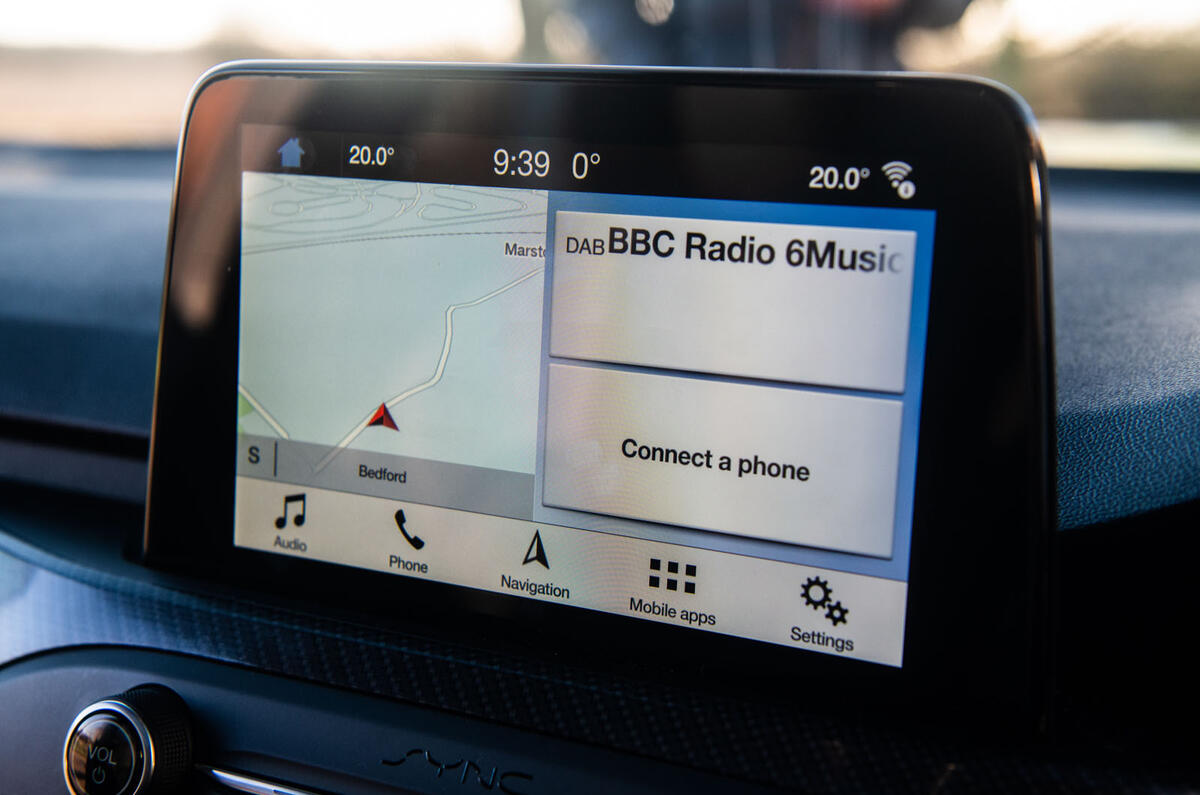
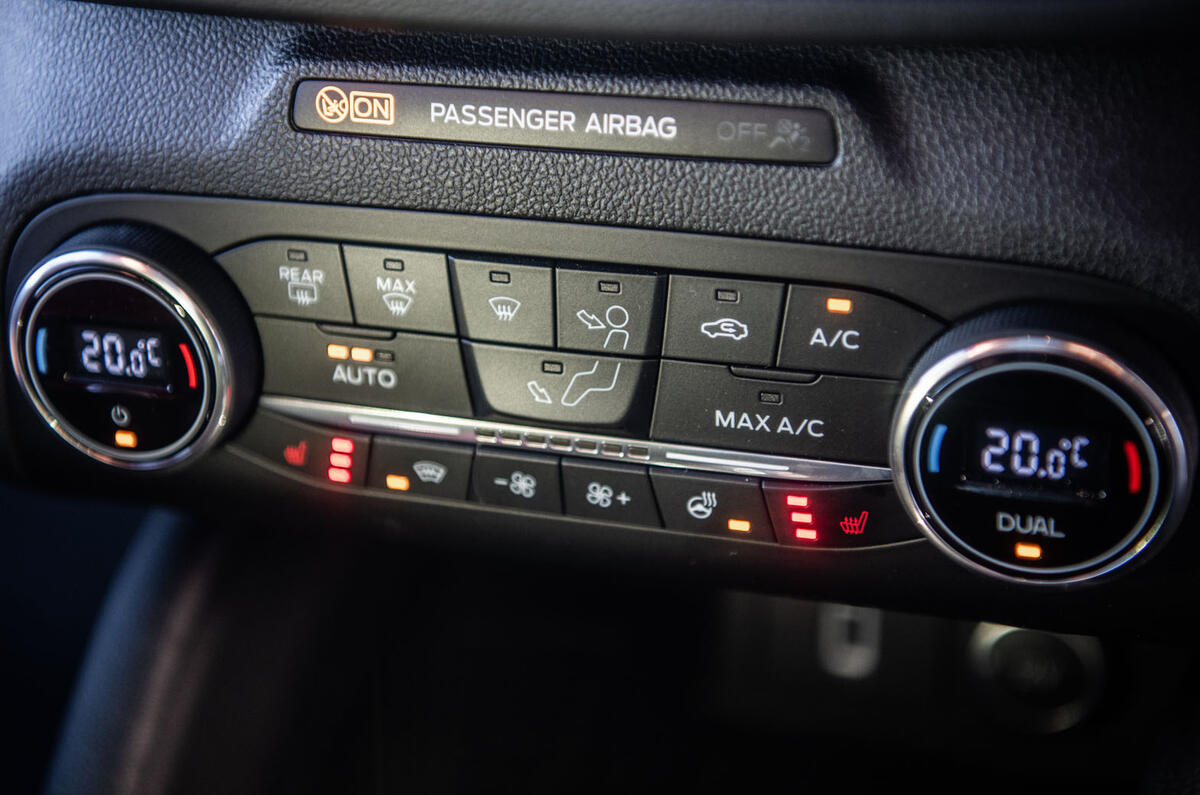
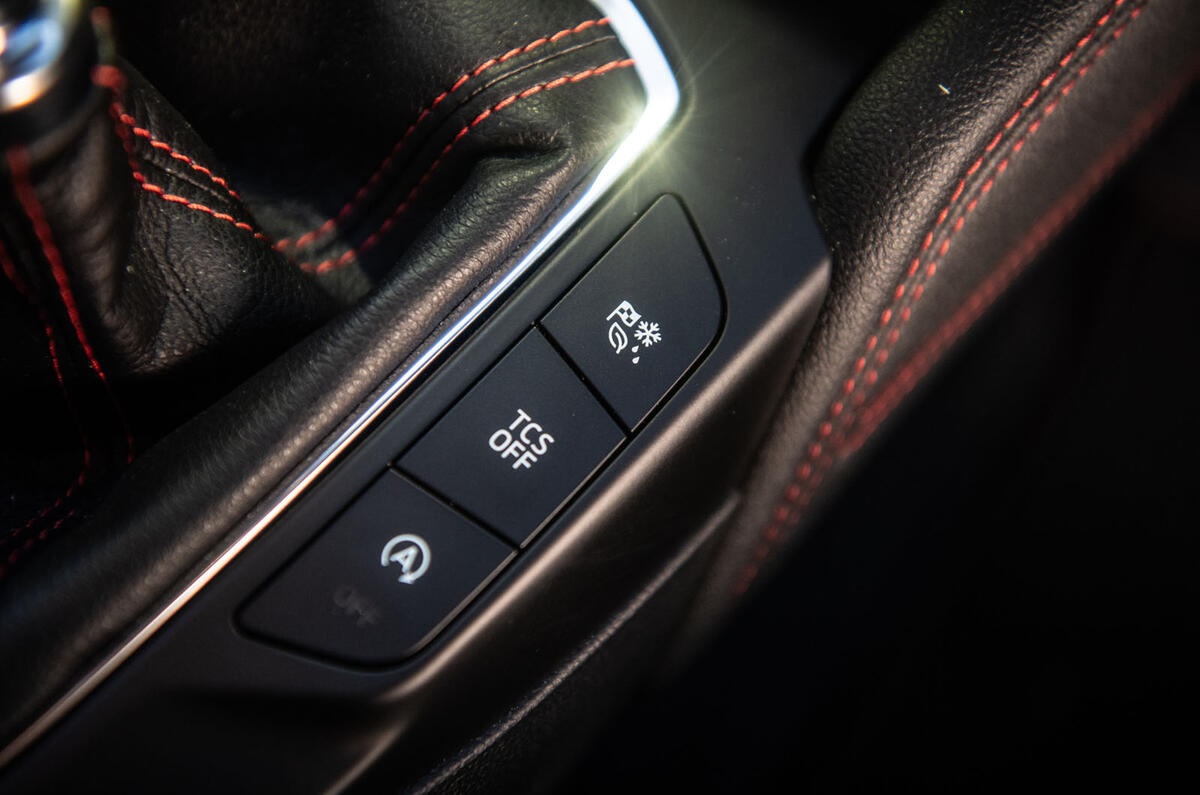
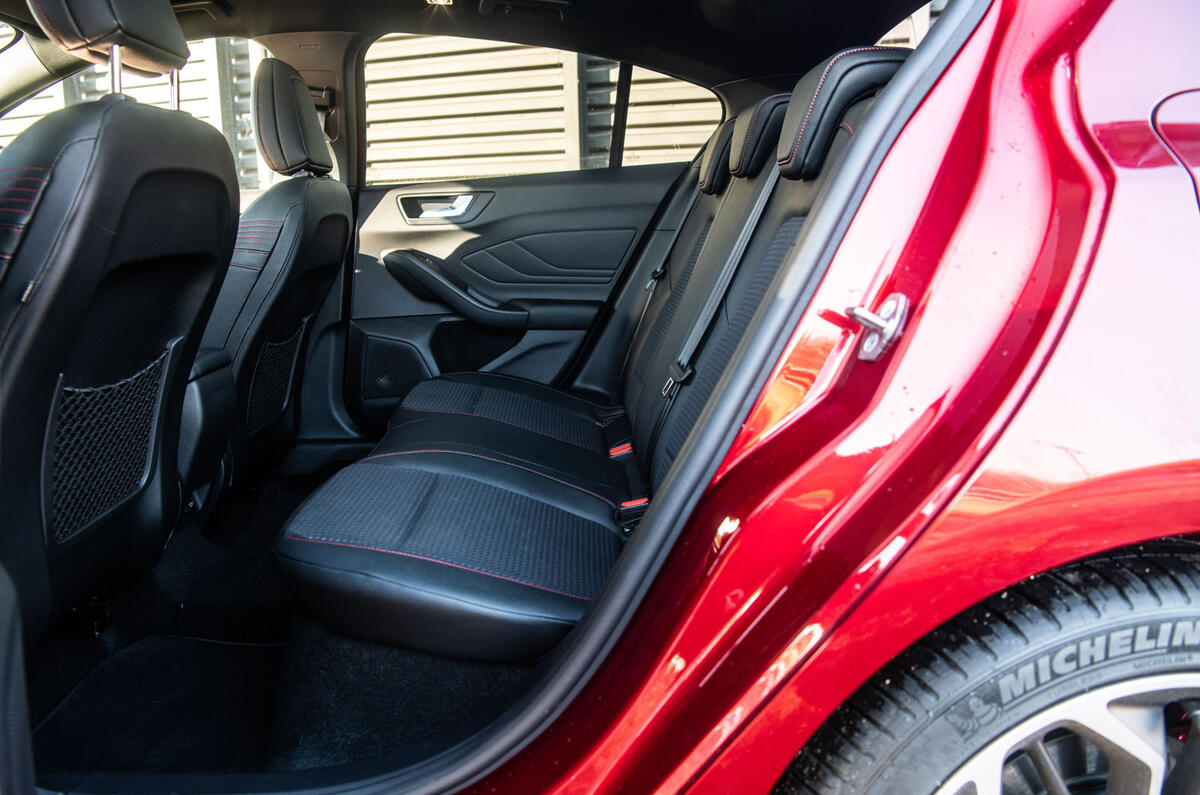
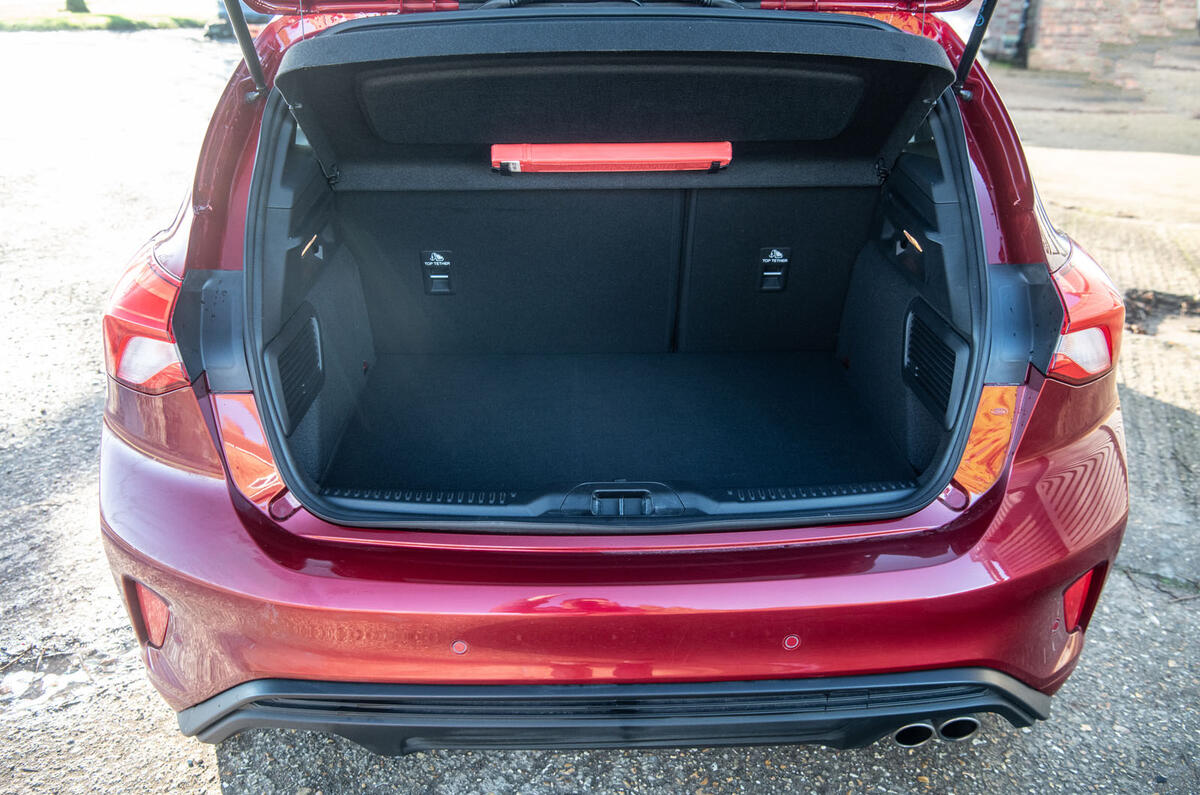

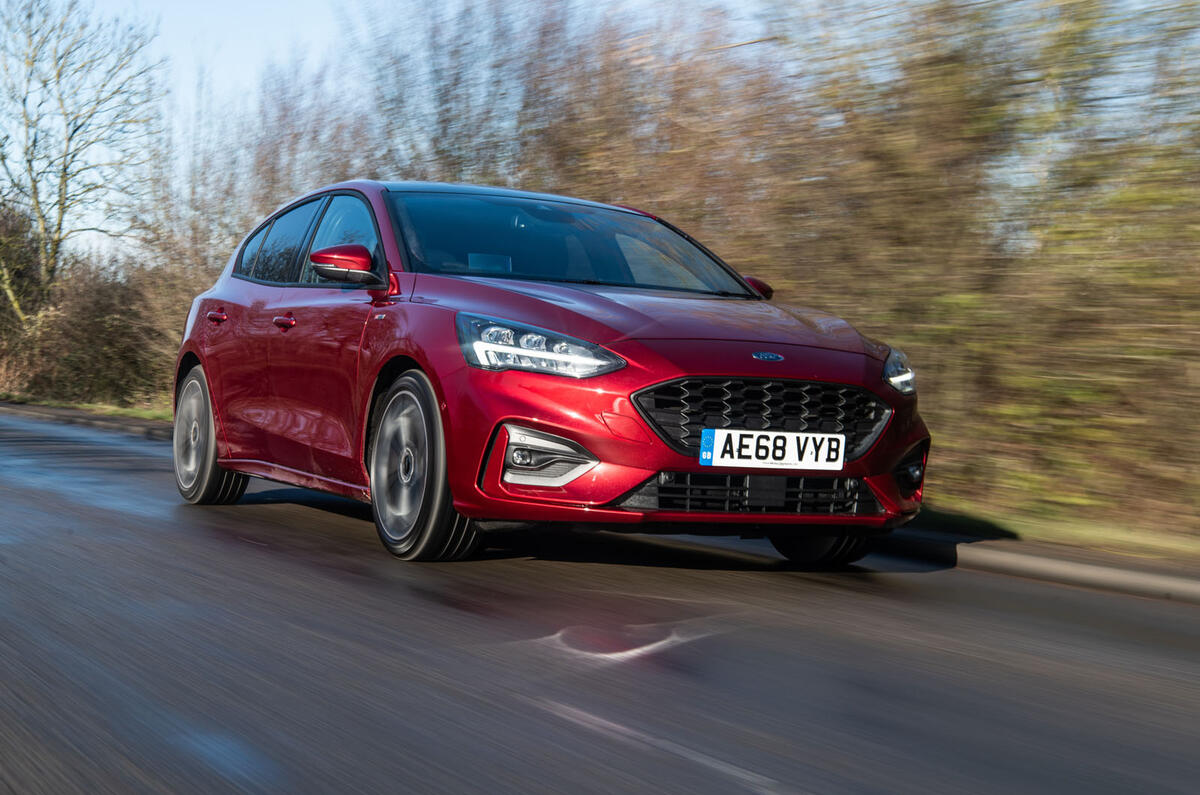
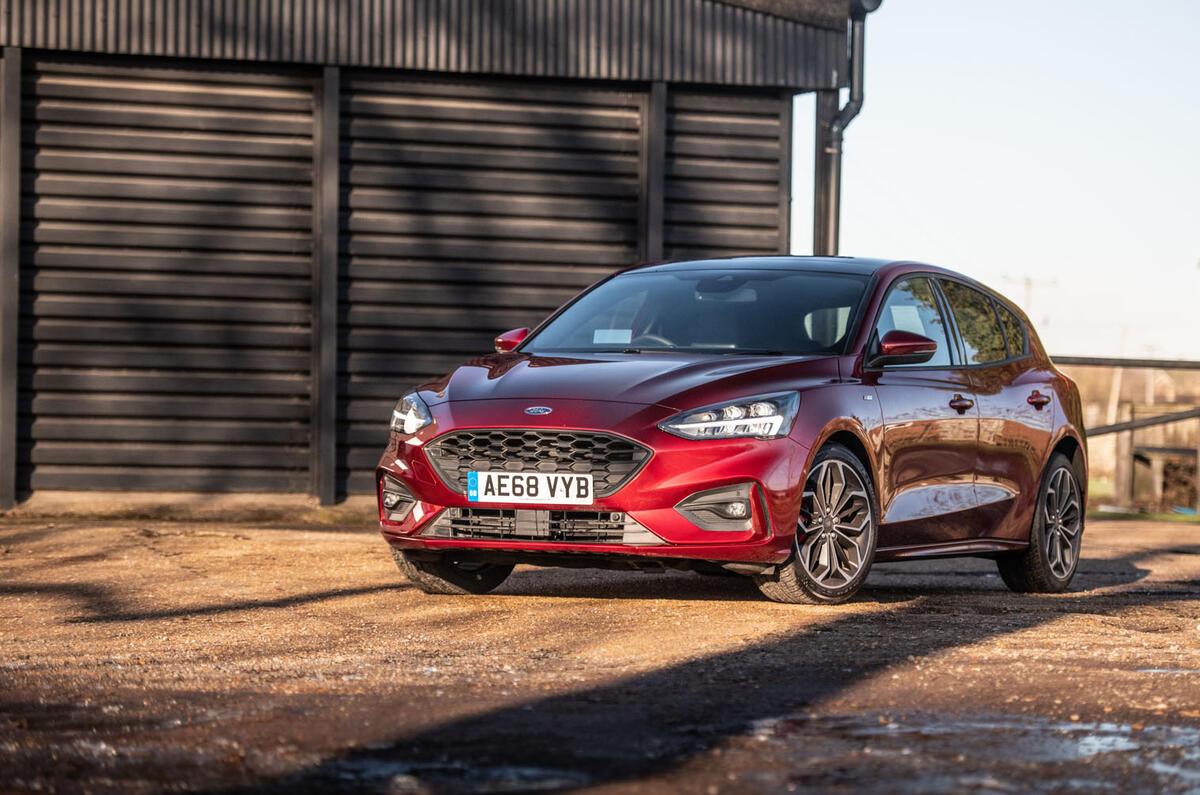

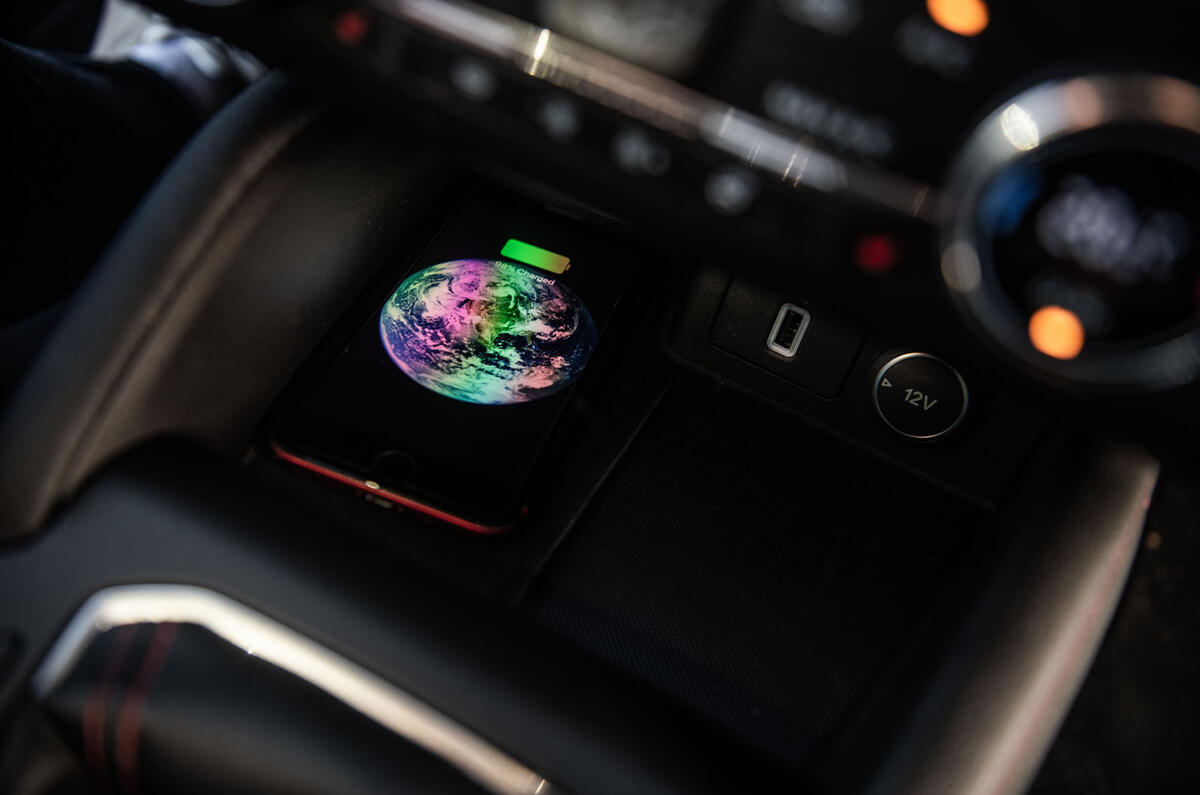
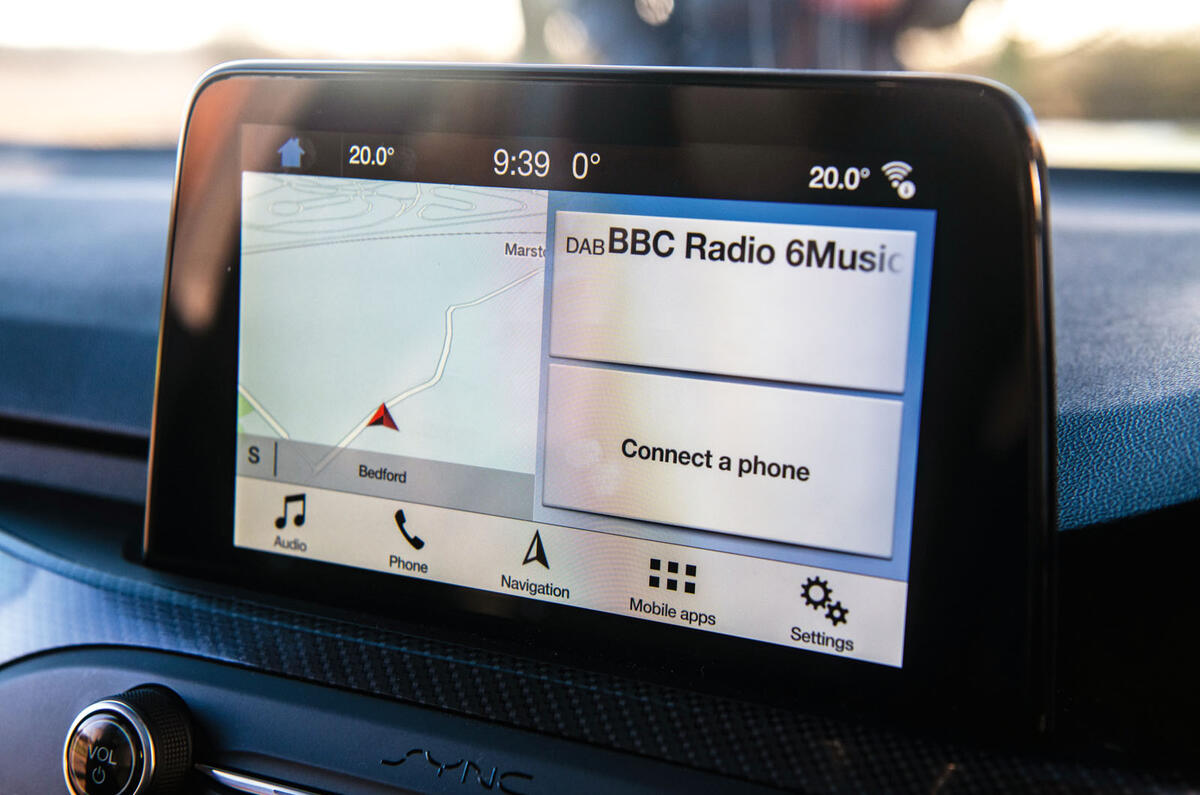
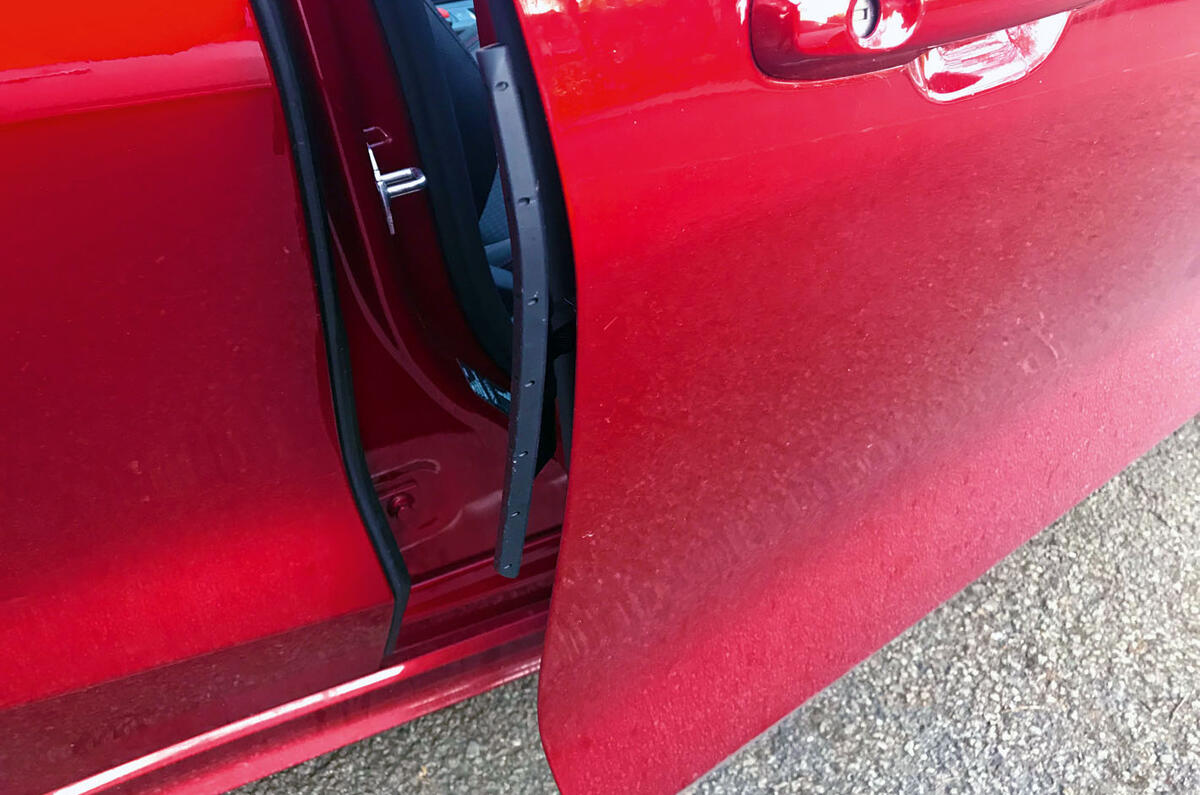

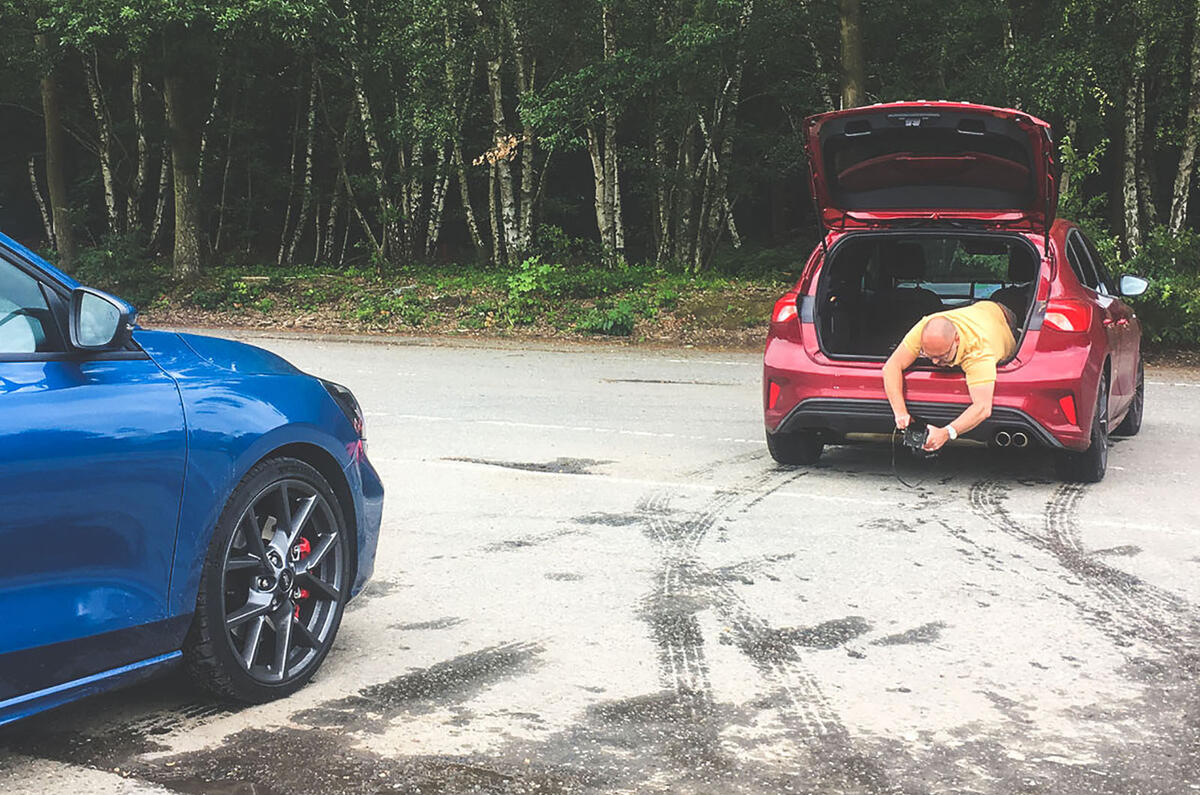

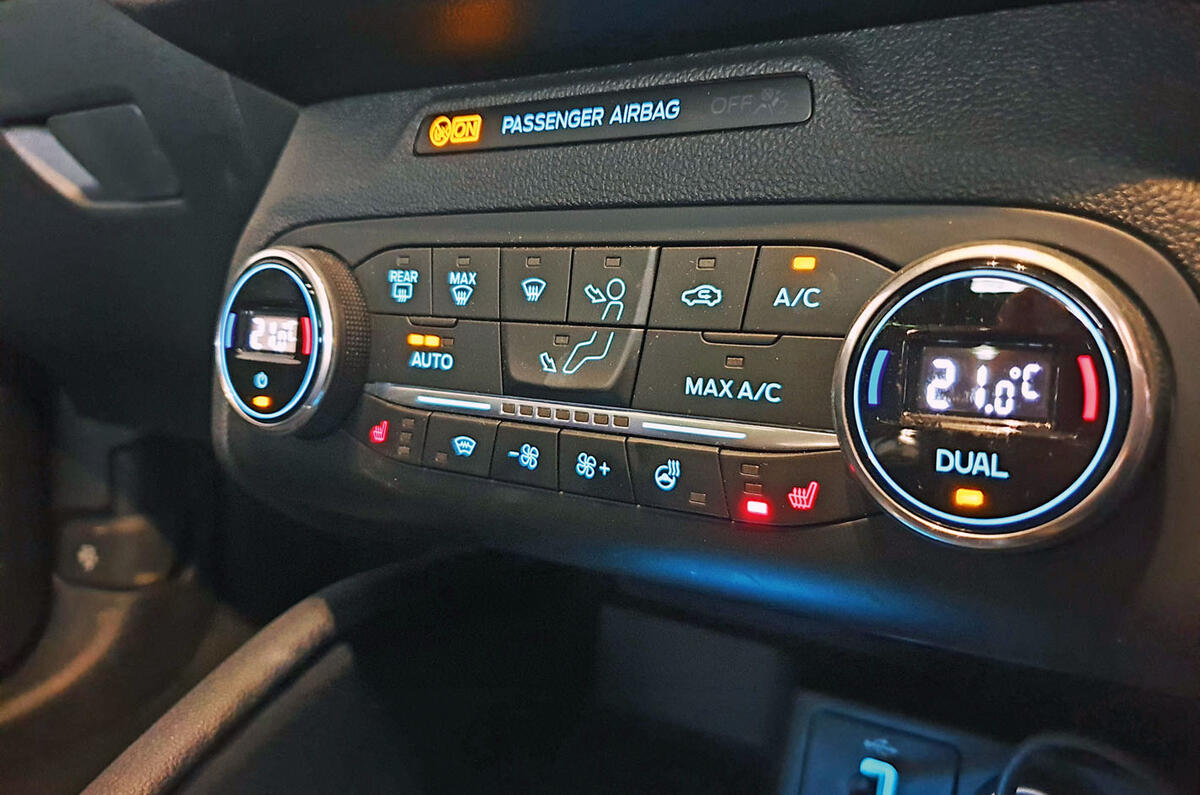
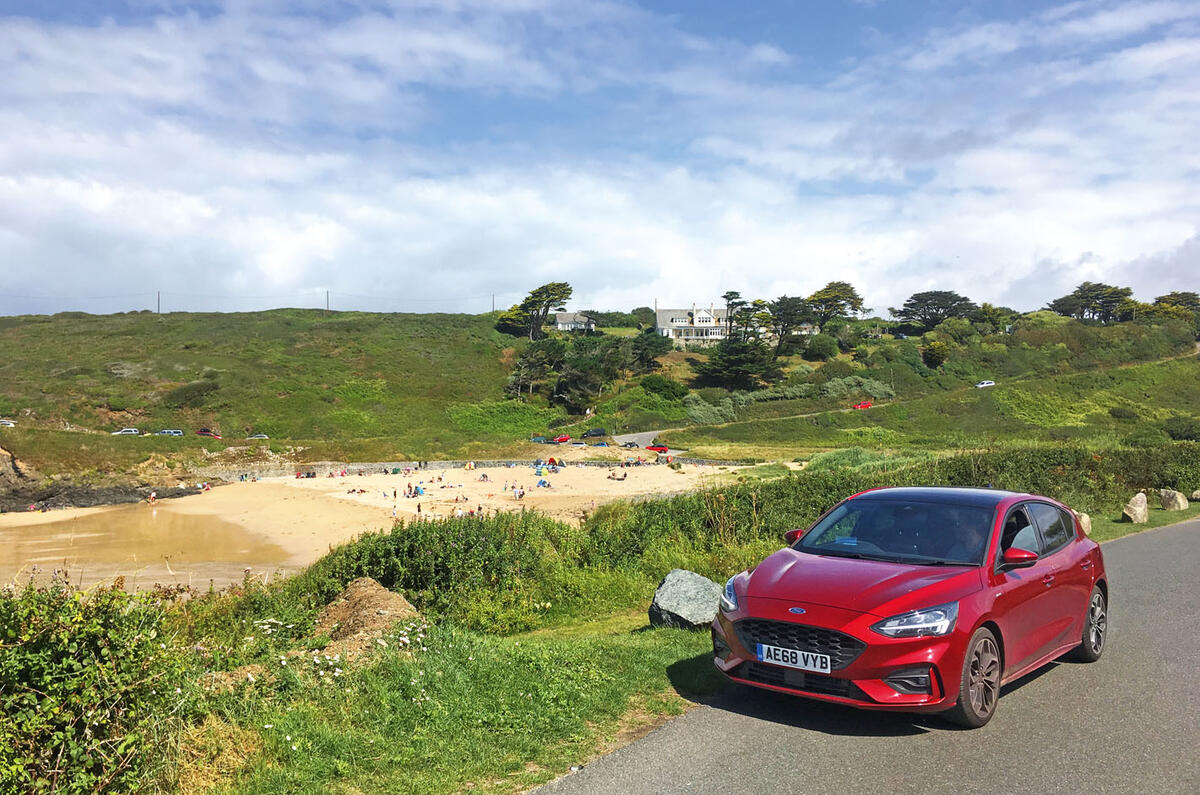
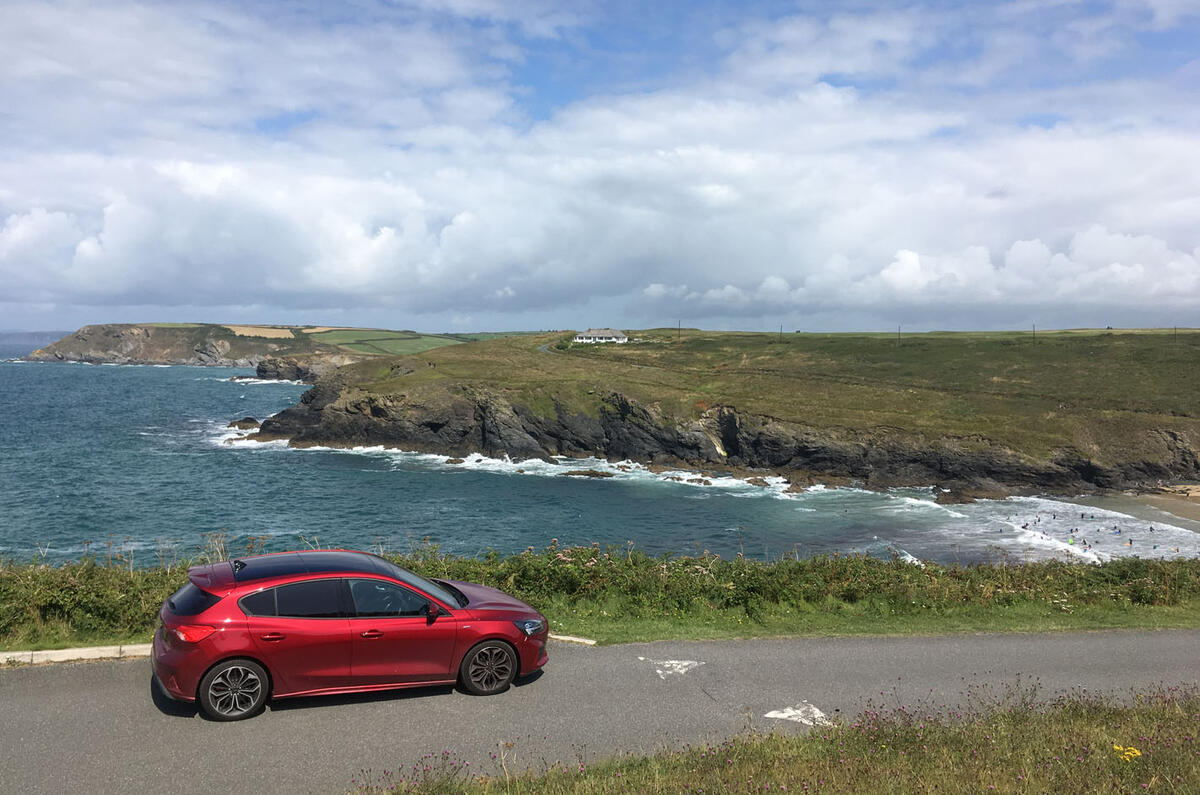
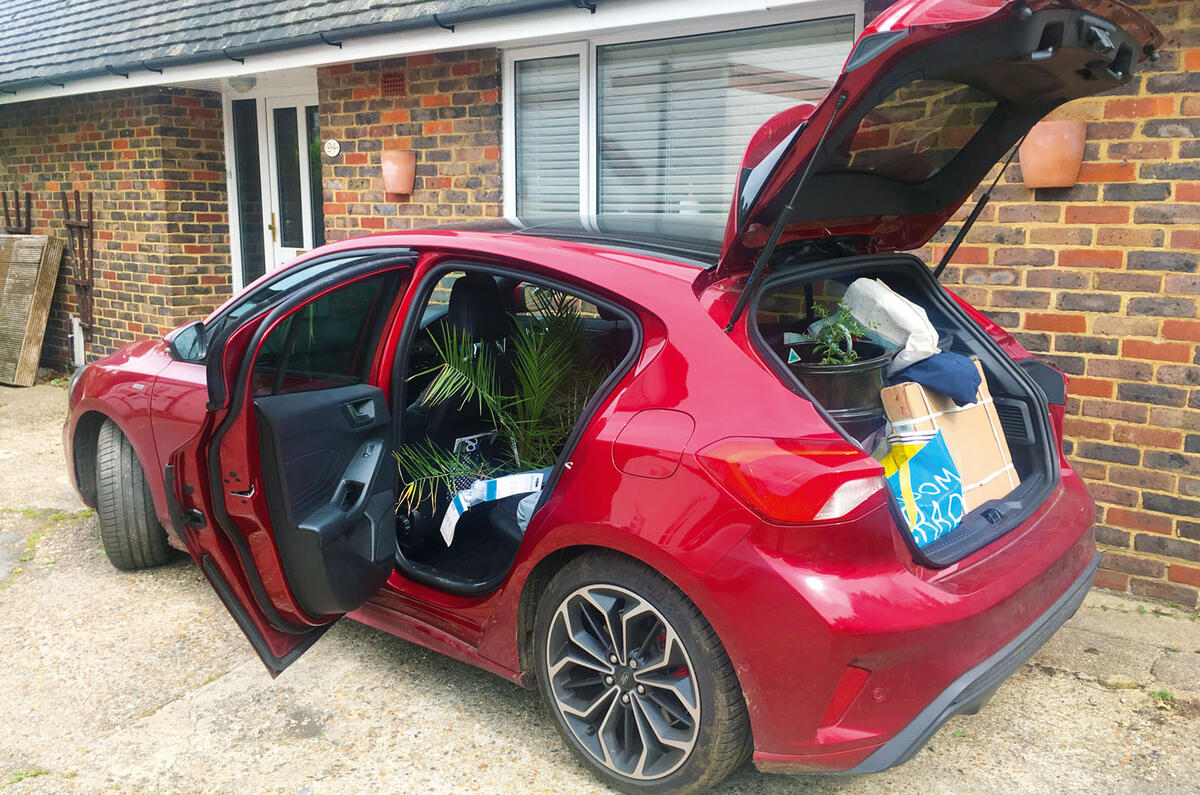
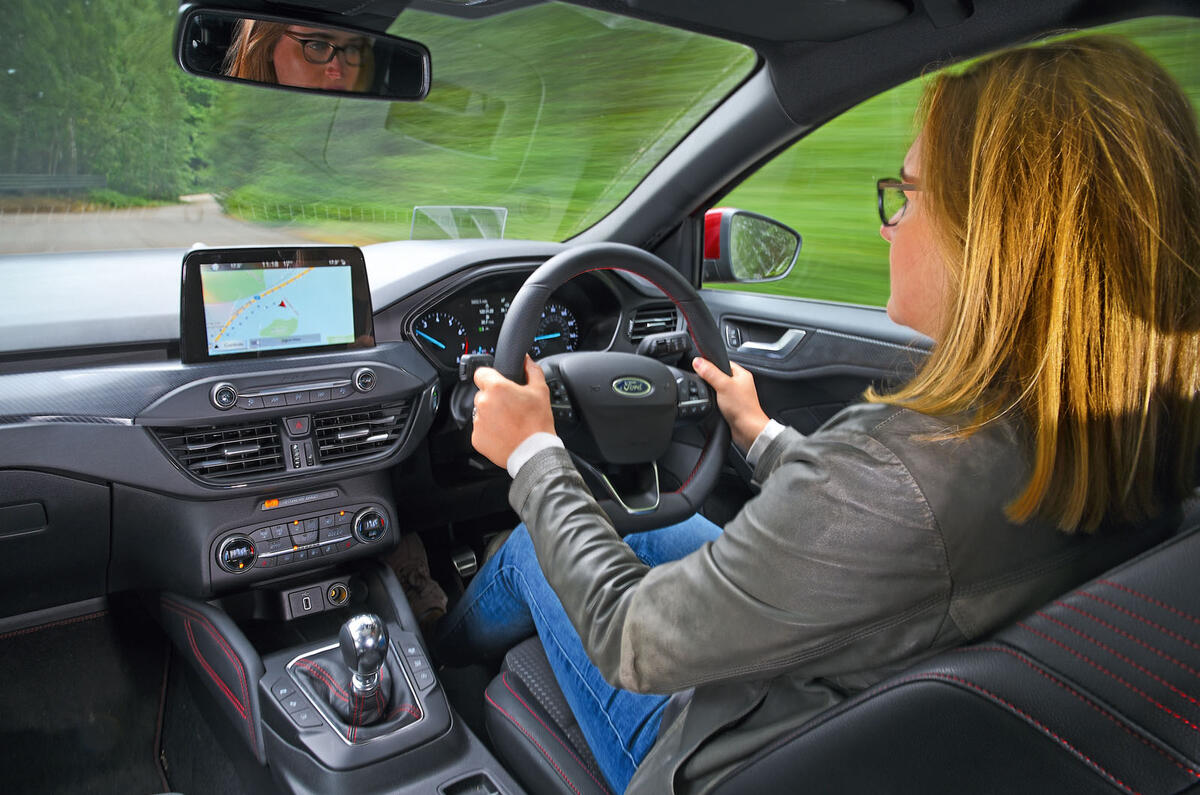


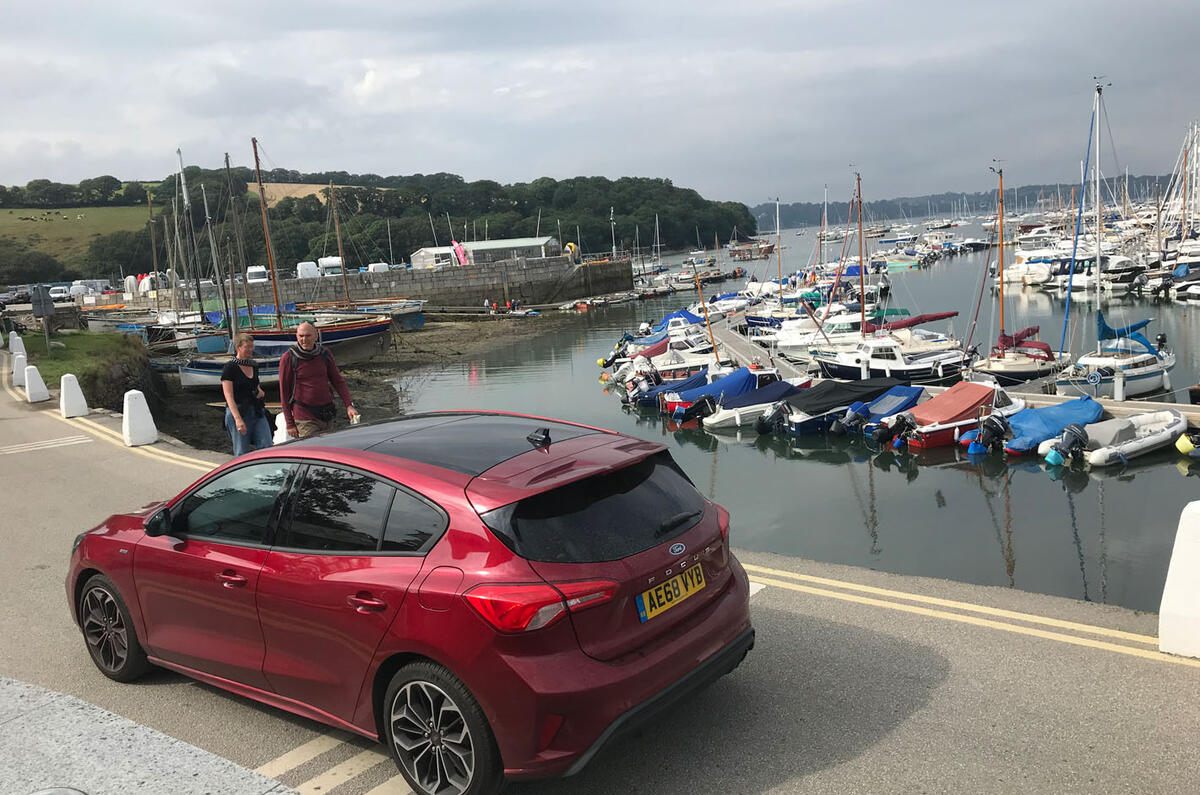
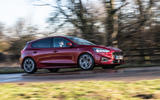
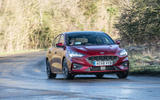
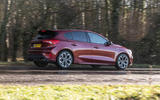
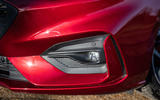
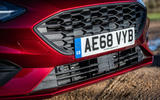
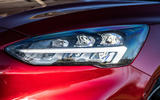

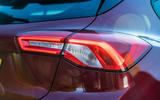

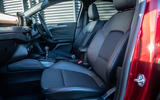
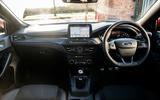
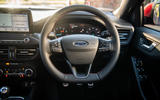


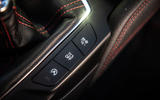
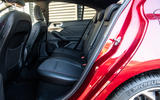
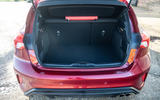

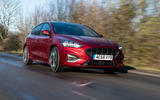
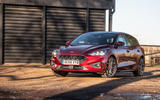
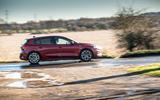

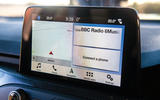
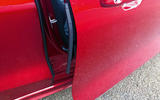


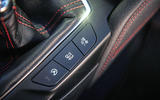
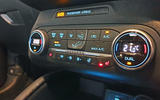
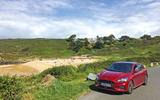
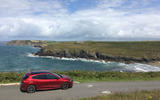
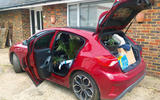

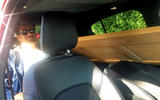

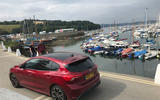


Join the debate
Add your comment
touch screens?
Found the review by random google search, review seems superficial with quite a few paragraphs that don't really say much, like how much space it had for moving; it's a compact it has space like a compact, probably not too small but not too big either; it's not like a Mondeo estate.
Non latching Eco mode
No new car can 'latch' (remember previous setting) on driver modes, as if you do on WLTP you have to test every mode varaition and you get an average (worse because it will include sport), if you reset to default you only test the default mode. So all manufcturers do that now as its cheaper and easier. They could make eco the default but then it feels worse and journalists moan. But what you end up with is actually normal is now an WLTP optimised mode, Eco is super eco and beter in the real world (mway etc) and sport ends up feeling more sporty in almost every car, unless they have a sport + or track mode.
Why do motoring hacks insist